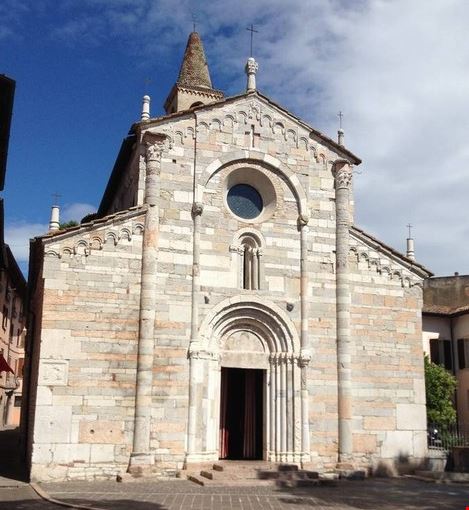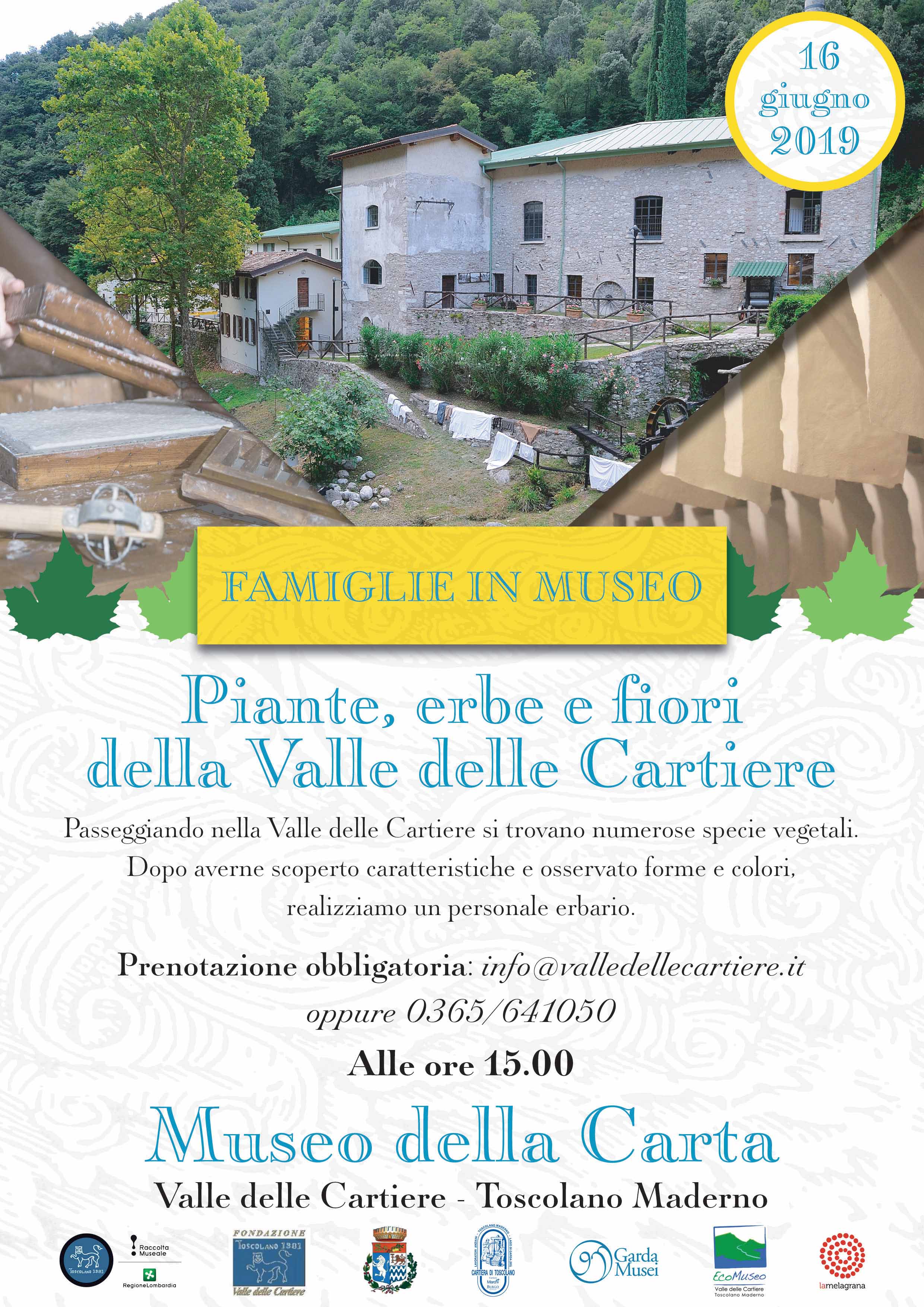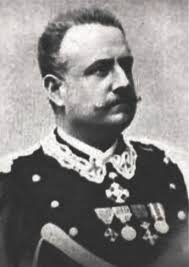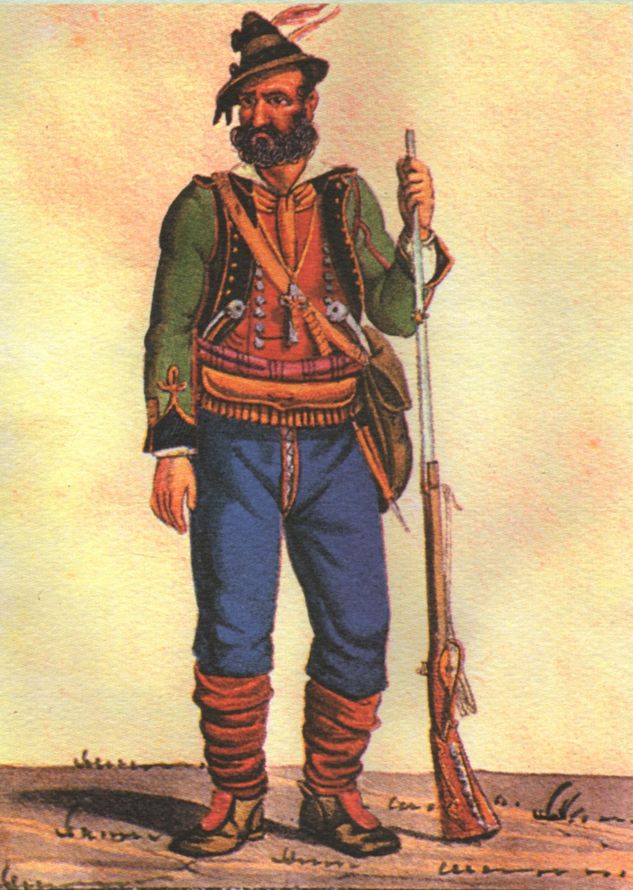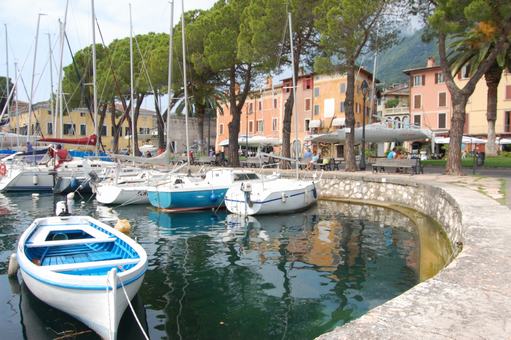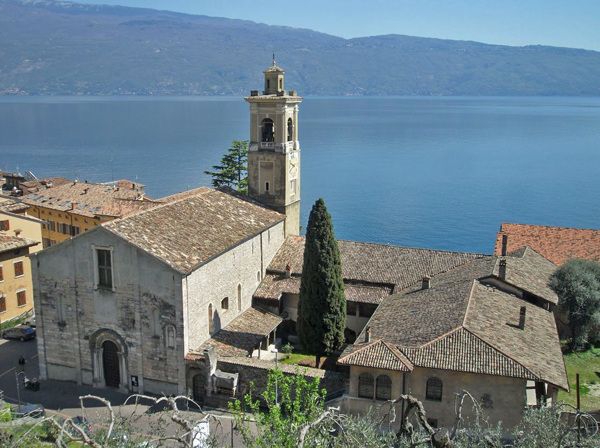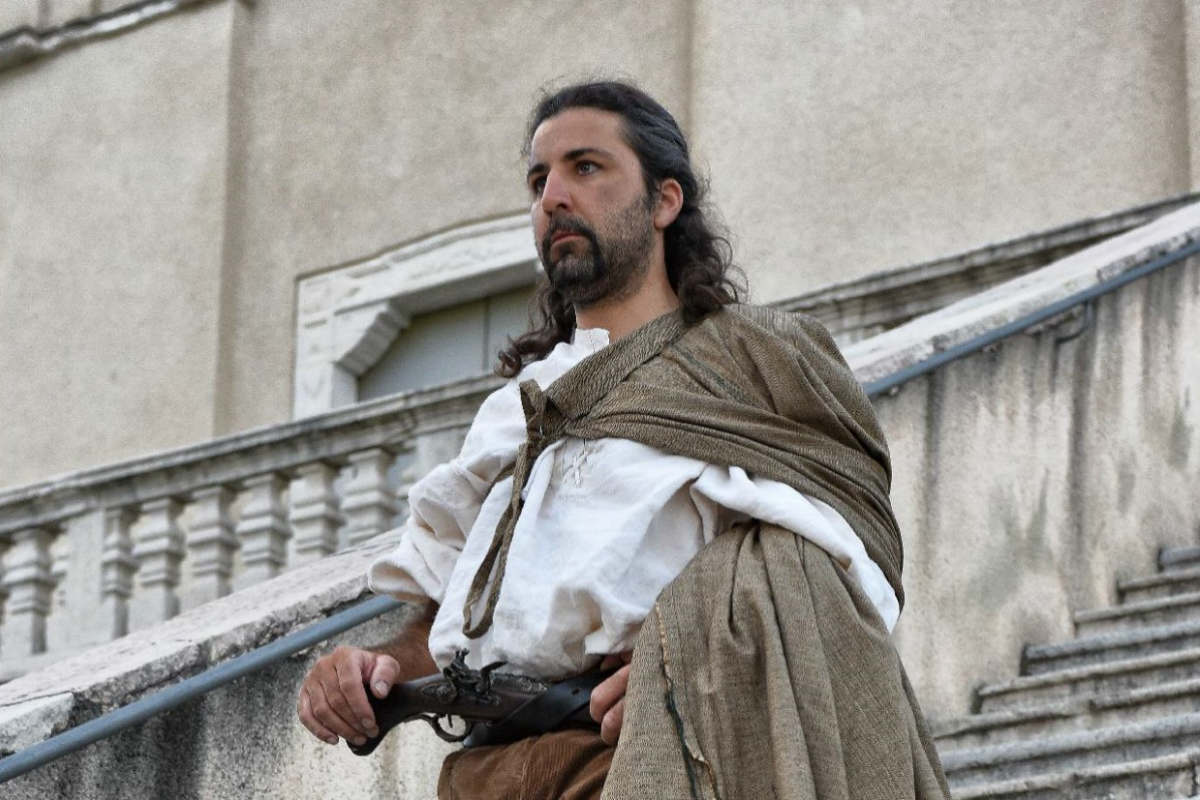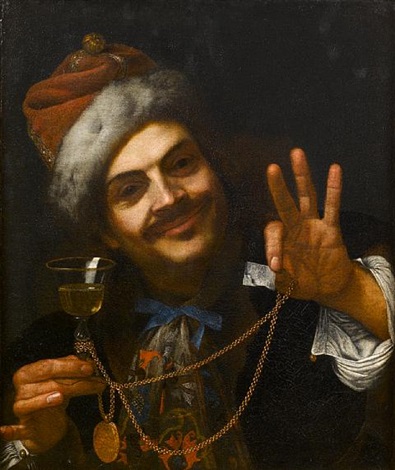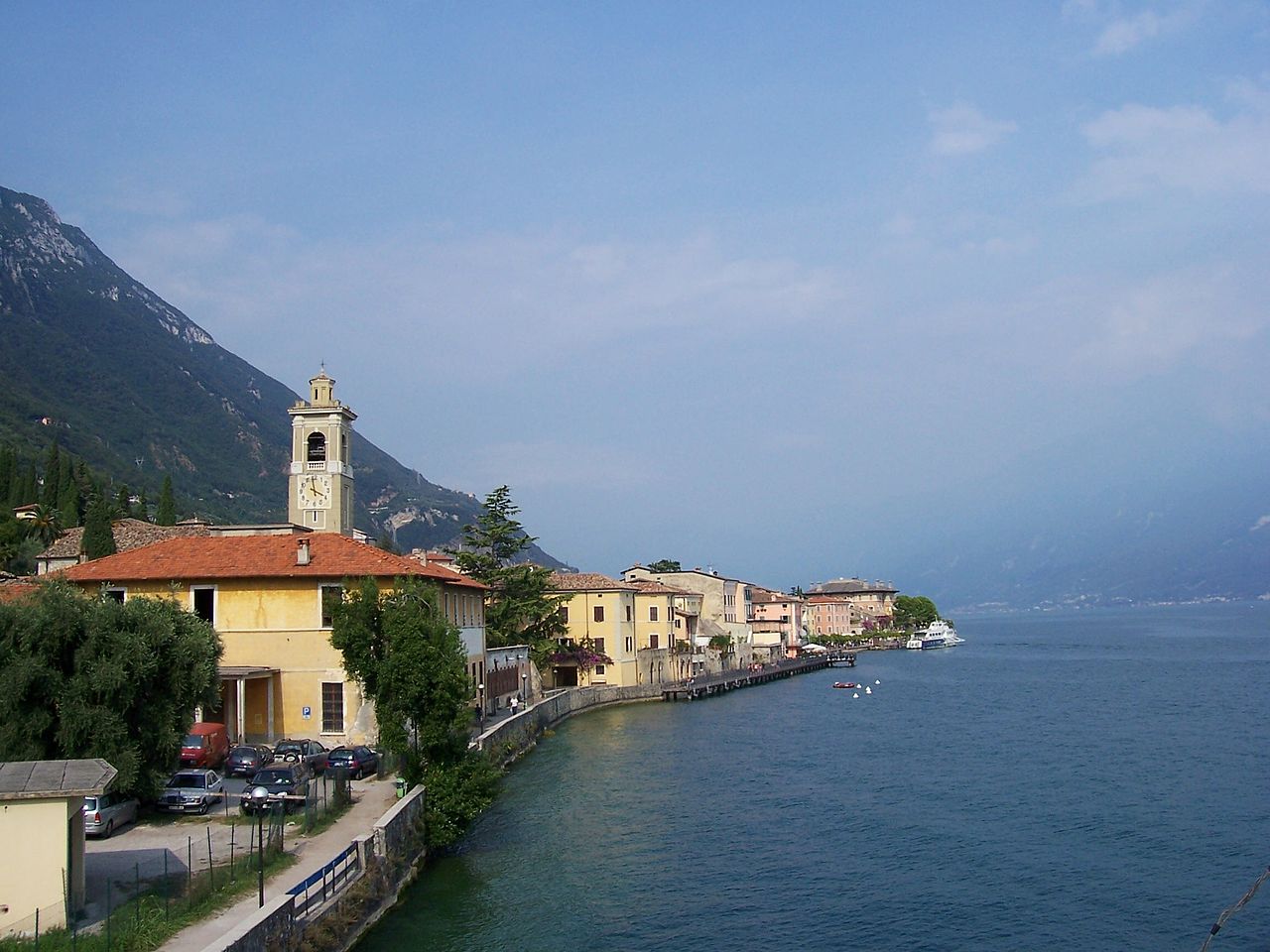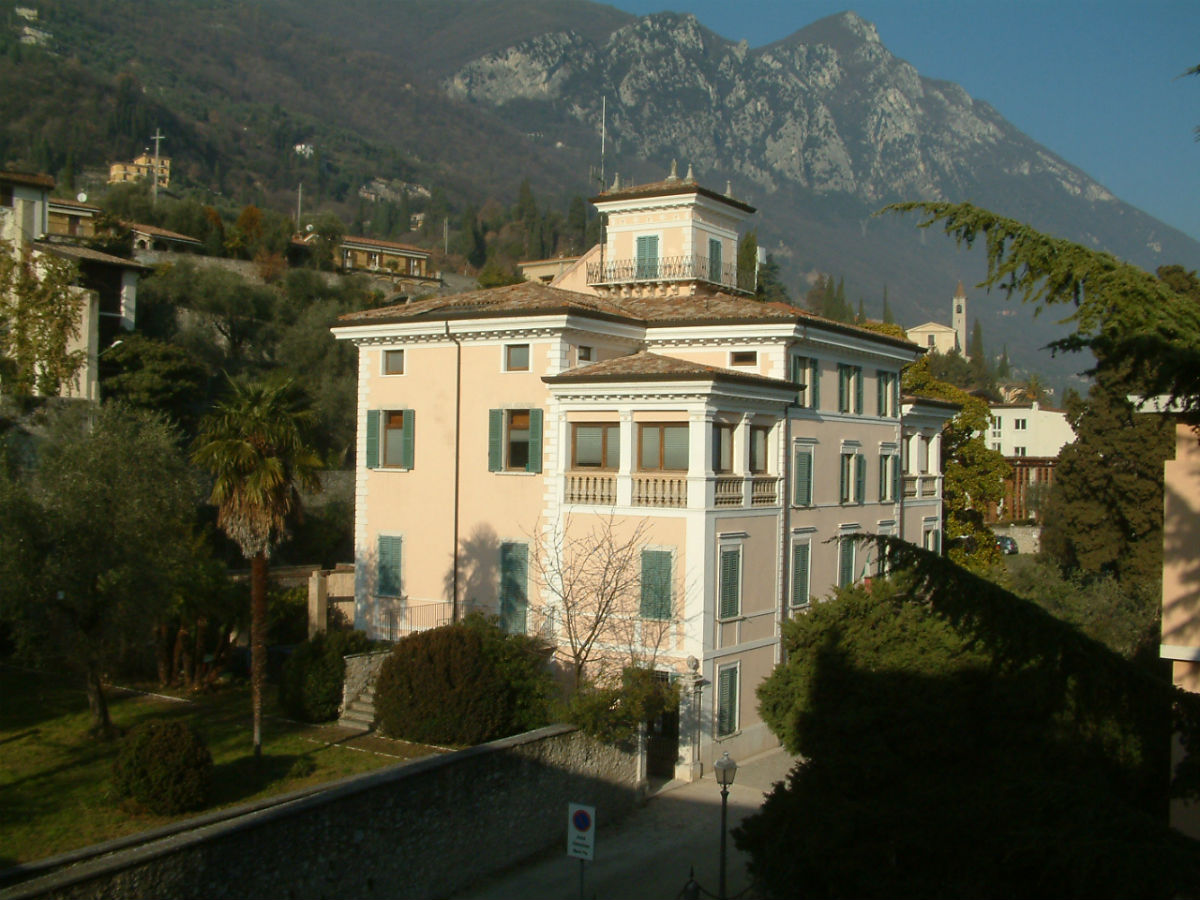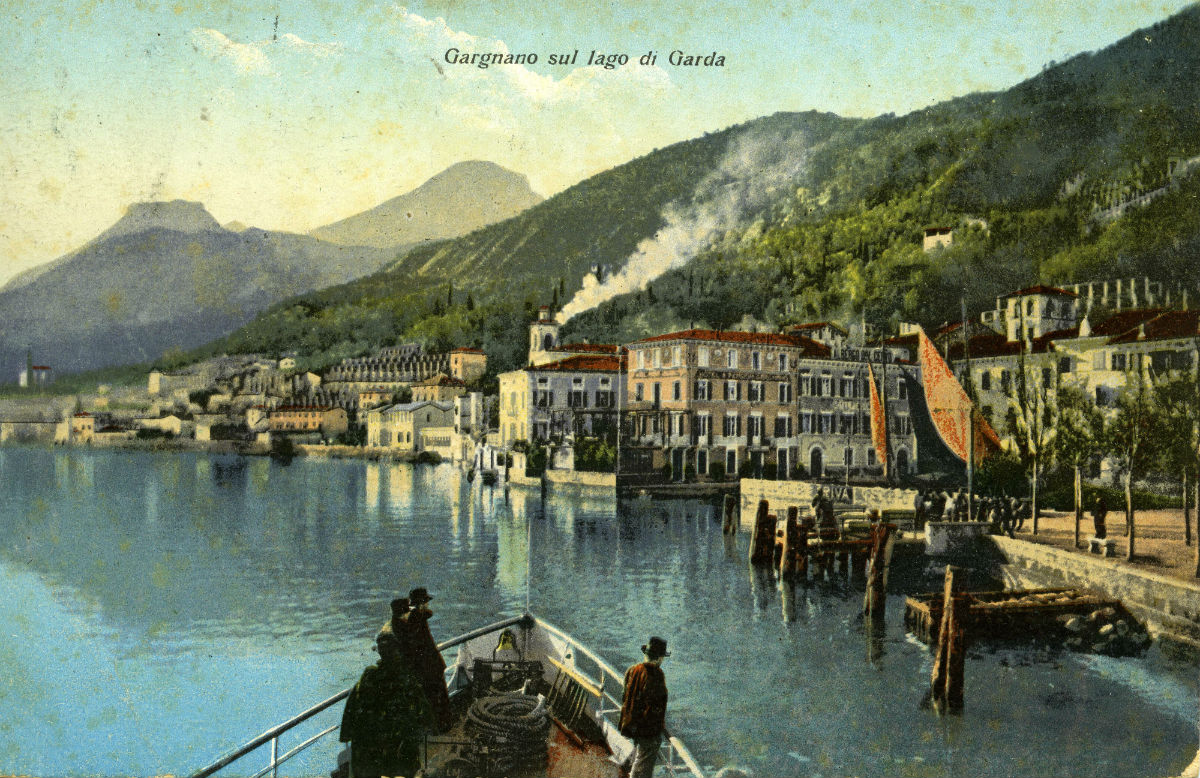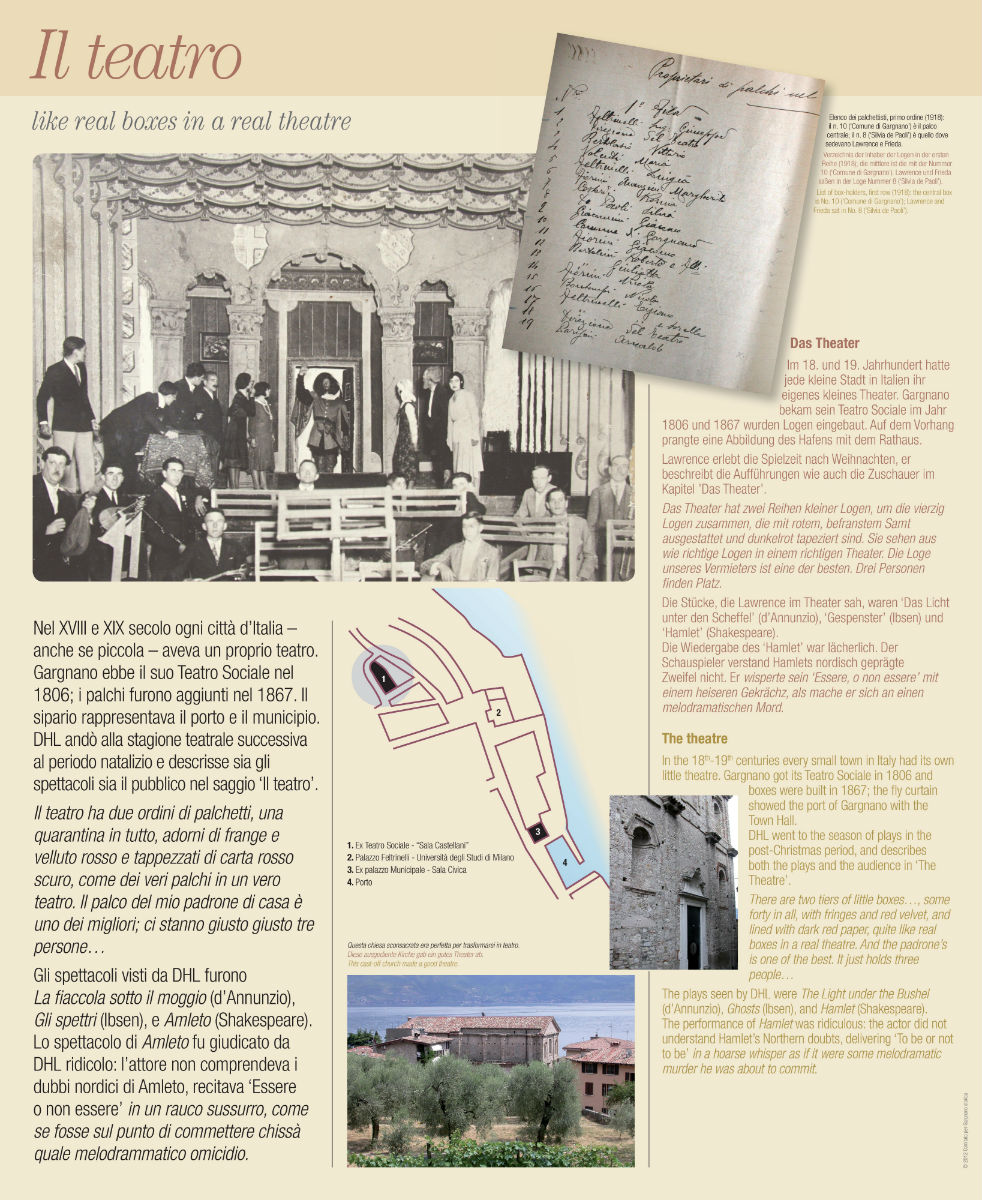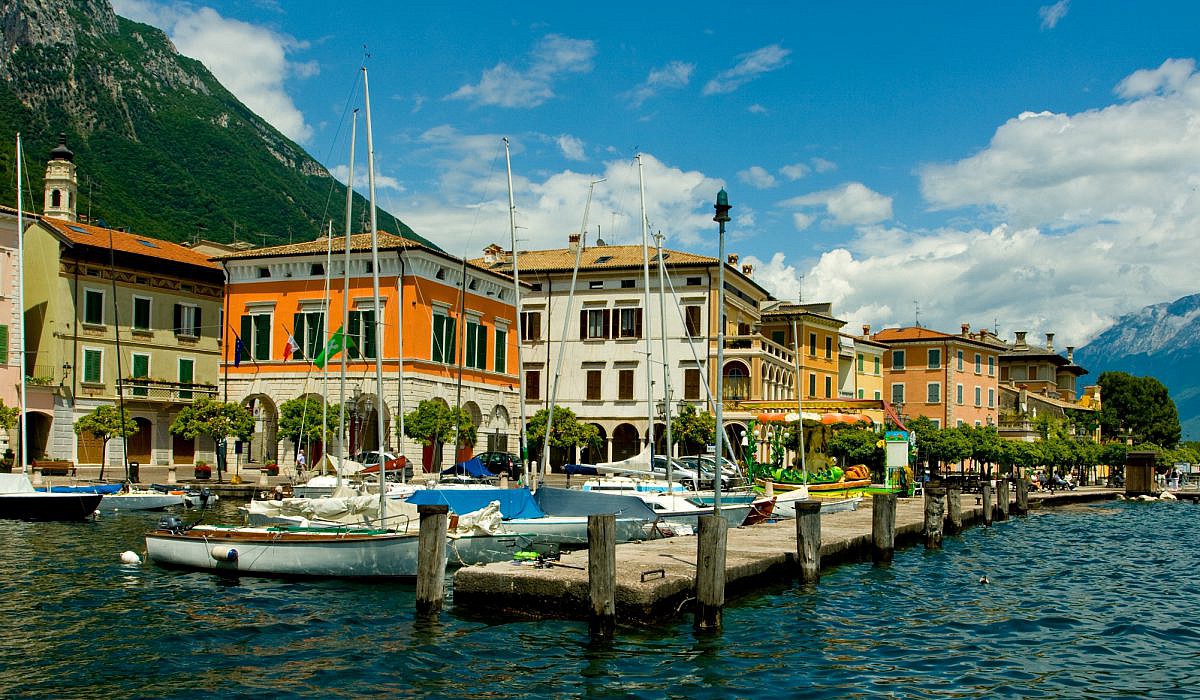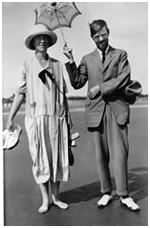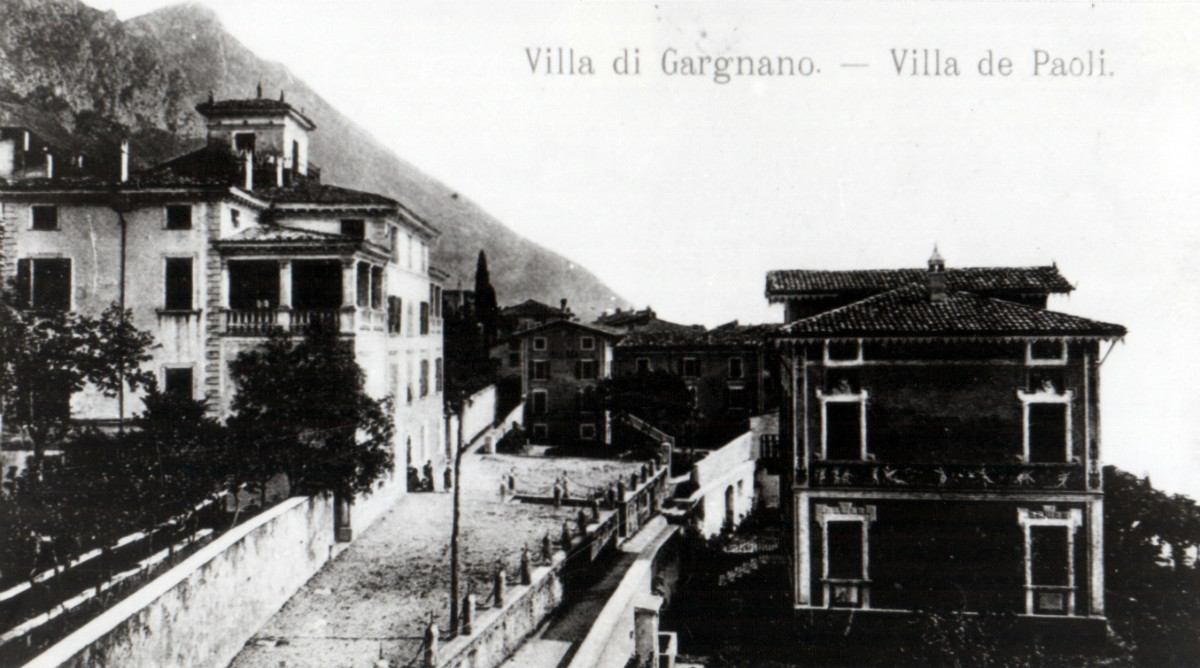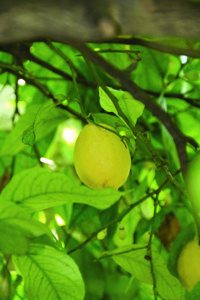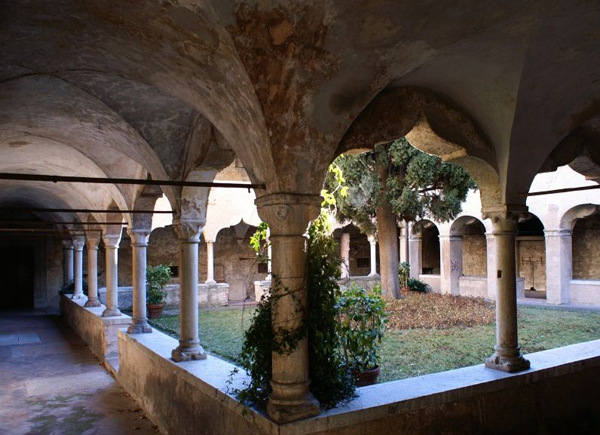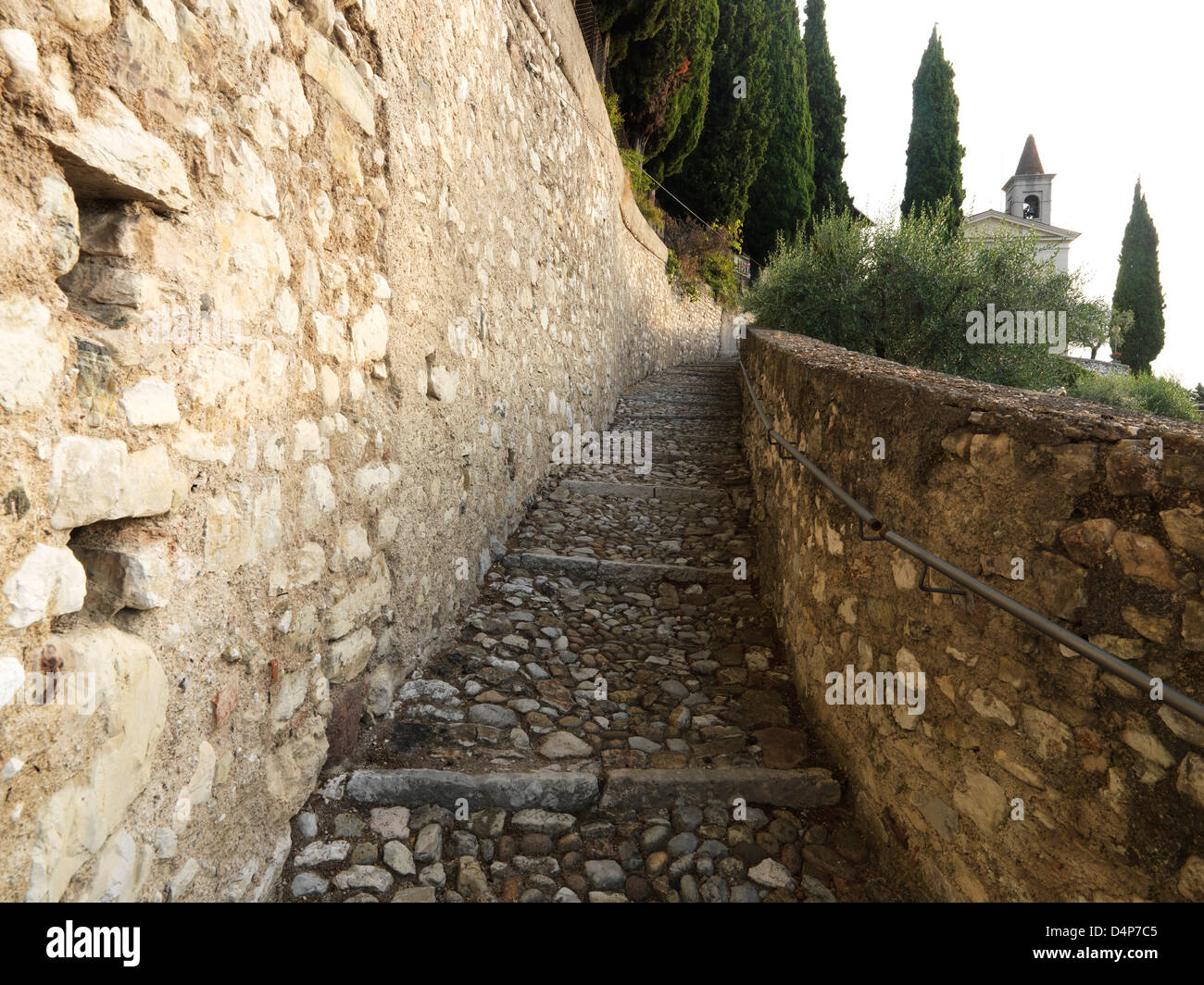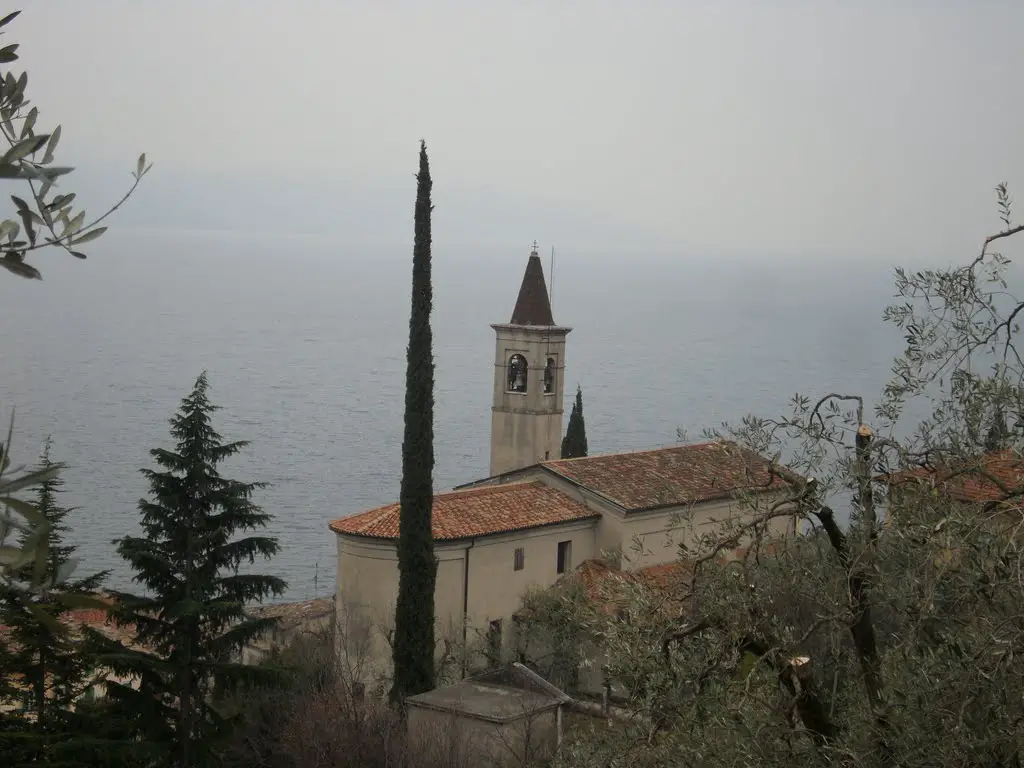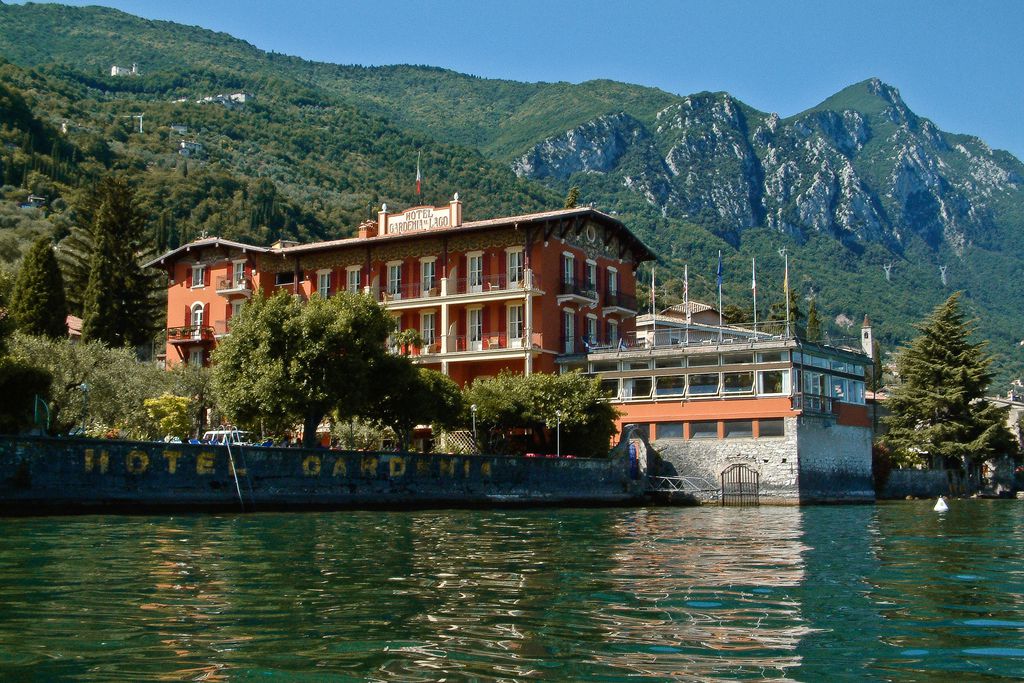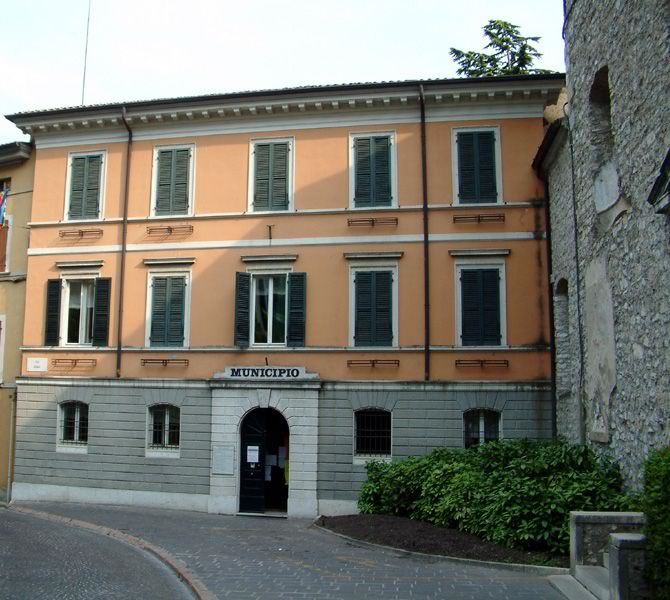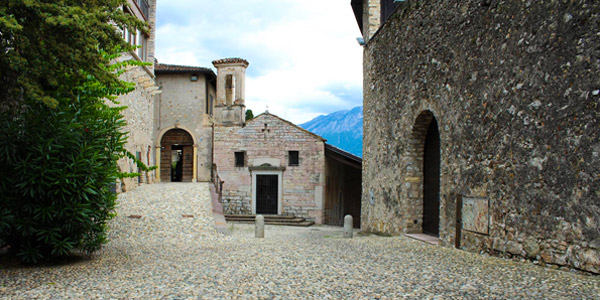Landschlacht, Switzerland, Tuesday 23 July 2019
There are advantages and disadvantages to everything.
In less than a fortnight I shall board a train to Romanshorn, followed by a ferry across the Lake of Constance (Bodensee) to Friedrichshafen then a train to Lindau, another to Kaufbeuren, another to Füssen and finally a bus to Schwangau to join my wife for a long weekend break.
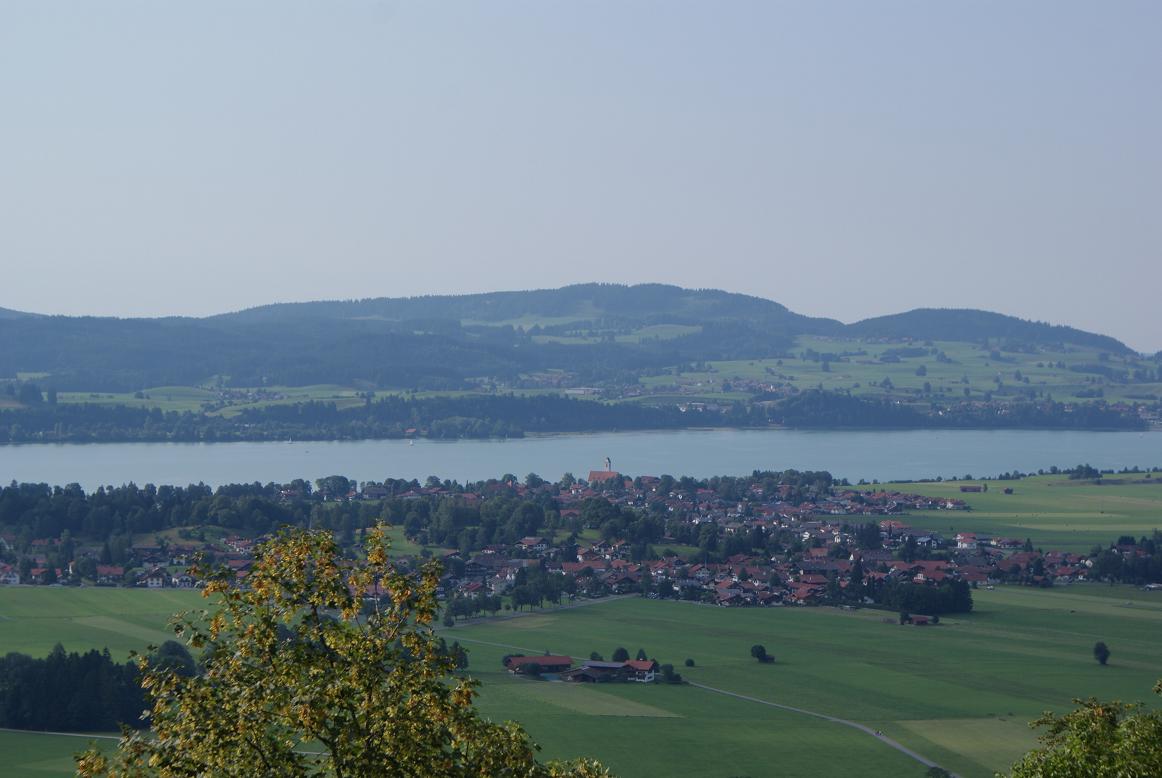
Above: Schwangau
This entails taking the second earliest departing train at 05:55 from our local station and a journey of five and a half hours to be reunited with the wife on holiday for her birthday at a spa resort in the Allgäu region of Bavaria.
I do not enjoy spas, wellness centres, health farms, but I do enjoy my wife’s companionship.
The things we do for love.
It is this romantic compulsion, this sweet surrender of one’s will for the beautiful harmony found with another person that makes me recall some compromises I have made for my better half on some journeys we have made together.
Unlike my wife whose ambition is fixed once she has determined to do something, I rarely kick when her female perogative decides that what I planned will now not happen.
I have wanted to climb the Tour Eiffel in Paris, drive to Roscommon in Ireland, and stop more often en route from Freiburg im Breisgau to Bretagne, but her jaw was set, her foot was put down, her nerve defiant.
Ultimately life somehow went on without the tower ascent, the Irish detour or the frequent French stops, but my childish petulence of wishes denied is still remembered.
Such pettiness a husband can harbour!
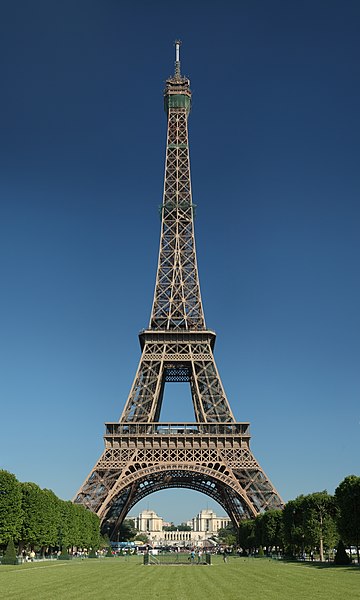
There was another such moment last year on our northern Italian vacation….
Highway 45 between Gardone Riviera and Limone sul Garda, 6 August 2018
Barely 3 km east of Gardone, the road passes through the twin comune of Toscolano-Maderno, which straddles the delta of the Toscolano River.
Toscolano is predominantly an industrial centre while Maderno is exclusively a tourist centre, stretching in a picturesque gulf with a wonderful promenade among villas and gardens and a decent beach.

Above: Toscolano – Maderno
According to a legend, the ancient, mysterious town of Benaco, sunk into Lake Garda owing to an earthquake in 243, was built near Toscolano.
A memorial tablet on the bell tower of Chiesa San Andrea (St. Andrew’s Church) in Maderno bears a dedication of the Benacensi to Marcus Aurelius.
The Orto Botanico “G.E. Ghirardi” is a botanical garden operated by the University of Milan, and located on via Religione, Toscolano-Maderno.
The garden was established in 1964 as the Stazione Agricola Sperimentale Mimosa under the direction of Professor Giordano Emilio Ghirardi.
In 1991 it became part of the University of Milan, and today primarily cultivates plants of interest for medicine and pharmaceutics, but also supports research in transgenic plants, rice, etc.
Collections include Camptotheca acuminata, Eschscholzia, Nicotiana, Nigella, Scutellaria, and Solanaceae.
A car ferry crosses from here to Torri del Benaco on the eastern shore of Lake Garda.
The valley behind the comune has a tradition of paper-making dating from the 4th century.
Following the riverside road up into this beautiful, wooded valley brings the traveller past many disused paper mills to the Fondazione Valle delle Cartierie, with a well-presented museum offering an insight into the processes and importance of the industry.
Toscolano-Maderno is a Shangri-la for shady walks or sumptious picnics, but this day we have no time for a stroll nor food in the car for a sit-down meal.
We are on the way to Riva del Garda, our next night’s stop, the weather is sweltering and all we dream about is the AC promised at the Hotel ahead.
We left this morning after two nights in Sirmione, spent much of the day exploring Gardone Riviera and still had some distance to travel.
I was complacent, quiet and uncomplaining.

We arrived at Gargnano, said to be the prettiest village on Lake Garda.
Traffic ran above and inland from the town, leaving old Gargnano mostly noise-free.
The narrow difficult road north of town means tour buses don’t bother trying to reach Gargnano.
It is more workman’s base than tourist resort.
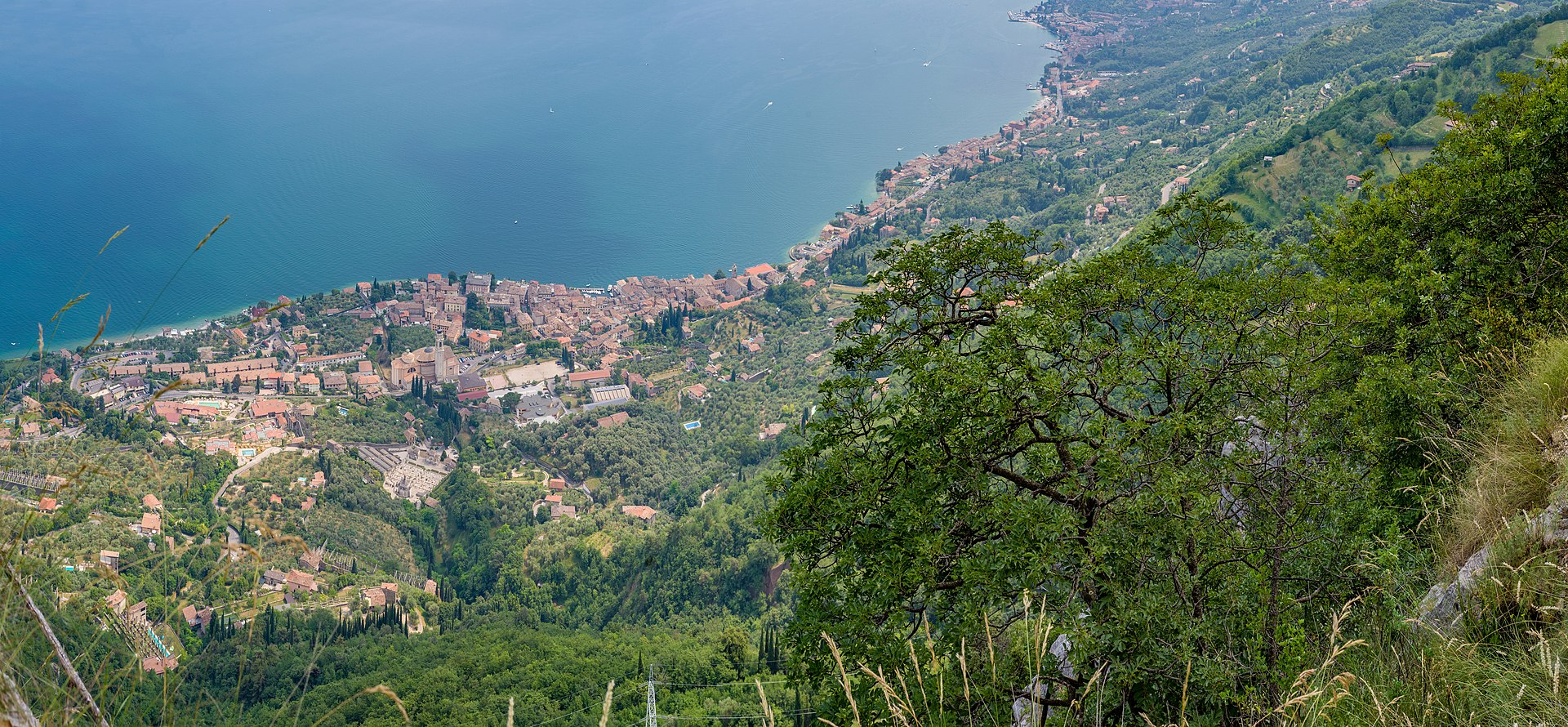
Above: Gargnano
Nonetheless Gargnano has a few claims to fame:
The naval operations on Lake Garda in 1866 during the Third Italian War of Independence (20 June – 12 August 1866) consisted of a series of clashes between flotillas of the Kingdom of Italy and the Austrian Empire between 25 June and 25 July that year, as they attempted to secure dominance of the lake.
The Austrian fleet, based on the eastern bank of the lake, was larger, more modern and better-armed than their Italian counterpart, and successfully maintained control of the waters, hindering the movement of Italian troops.

Above: The Austrian Steamer Hess
At the outset of the war, the border between Austria and Italy ran down the middle of the lake.
The Brescia region to the west lay within Italy while Verona and the lands east of the lake were Austrian.

Austria controlled Riva del Garda at the northern tip of the lake, as well as the important fortress of Peschiera del Garda on the west bank of the River Mincio at its southern end.
Peschiera was part of the so-called ‘Quadrilateral‘ of strong core Austrian defences, leaving the exposed eastern shore of Lake Garda an area of potential weakness, vulnerable to Italian infiltration.
This might have involved a strike from the north end of the Lake up the valley of the Chiese River to threaten Trento and cut off the supply lines of the Austrian forces in the Veneto.
It might also have involved a landing of forces behind Peschiera to threaten Verona.

Above: Peschiera
On the Italian side, the buildup of Austrian naval strength caused concerns about a possible Austrian attack across the lake towards Brescia.
At the start of hostilities of 25 June, the Austrians immediately sailed out to threaten Salò and prevent any movement of Italian troops.
On 30 June, the Austrian ships bombarded the railway station at Desenzano, a supply and communications point for the Italian Volunteer Corps of Giuseppe Garibaldi, but caused only minor damage.

Above: Giuseppe Garibaldi (1807 – 1882)
More substantial action took place on 2 July, at 5 am, when four Austrian gunboats, including the Hess and Franz Joseph, bombarded the centre of Gargnano, where there was a strong concentration of Garibaldi’s forces.
The bombardment caused extensive damage to homes, one dead and eight wounded among the defending volunteers of the 2nd Regiment.
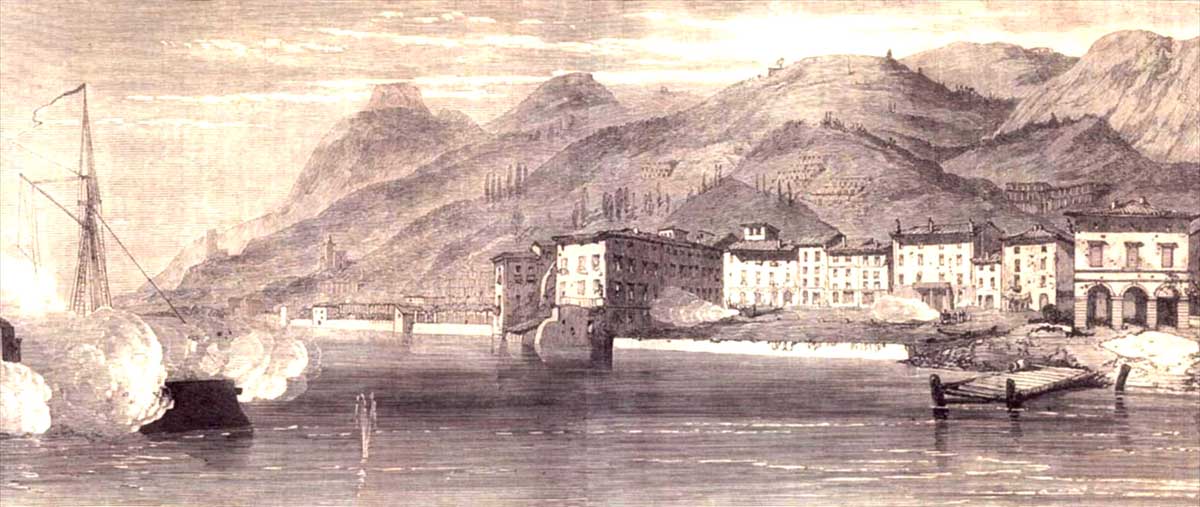
The Austrian flotilla was eventually compelled to withdraw under fire from an Italian battery commanded by Captain Achille Afan de Rivera.
Above: Captain Rivera (1842 – 1904)
Other skirmishes took place on the lake every few days.
On 6 July, Italian volunteers forces, equipped with nine long-range guns borrowed from a coastal battery at Maderno, ambushed the Austrian gunboat Wildfang at Gargagno.
The gunboat was hit twice, for no losses for Garibaldi’s army.
At the same time, the Italian flotilla sailed out from Salo to chase the armoured gunboat Wespe, on patrol off Maderno.
The Austrian vessel managed to disangage after receiving support from Speiteufel and Scharfschütze.
Italian sources claim that the Wespe was forced to seek shelter at Malcesine.
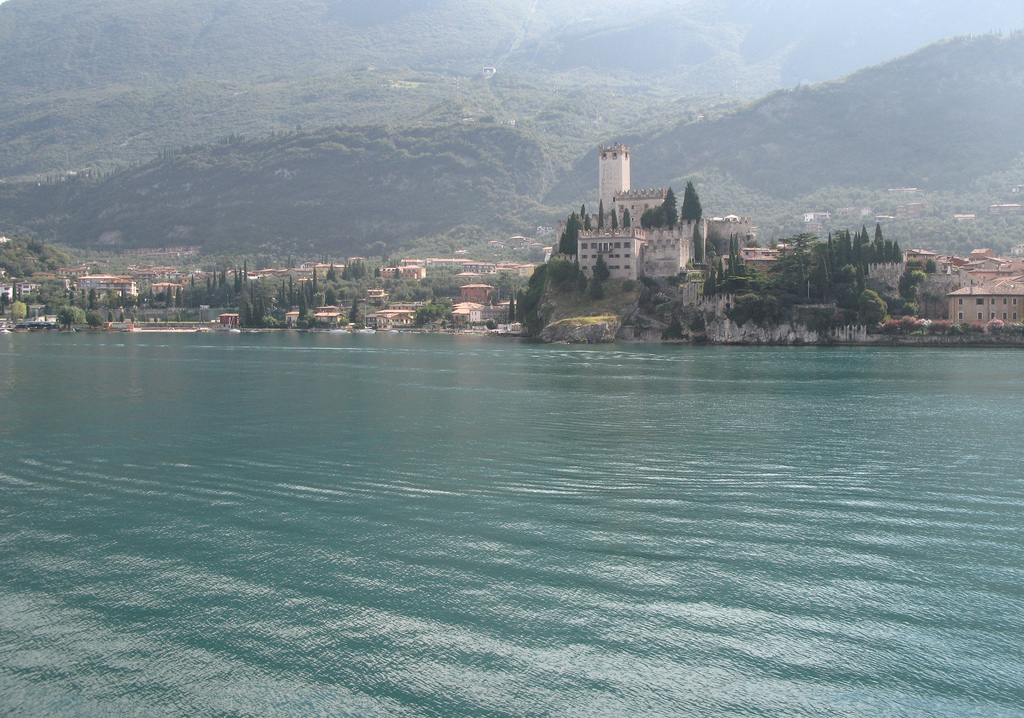
Above: Malcesine
The next significant combat occurred on 19 July when the Italian paddle steamer Benaco head out from Salo for Gargnano towing the sailboat Poeta, both ships carrying reinforcement troops and loaded with supplies for the volunteers in the mountains of Valvestino and Tremosine.
The Benaco was suddenly attacked by two Austrian gunboats, the Wildfang and Schwarzschűtze, which forced it in to shore near Gargnano, where most of the crew, troops and supplies were landed during the night.
The next morning Austrian whalerboats were able to capture the abandoned Benaco, still with a small gun and some rifle ammunition in her holds, and tow it away as a prize to Peschiera.
One of the whalerboats capsized under Italian fire, but was eventually recovered by the Austrian flotilla.
Three Austrian sailors were wounded, while heavy shelling on Gargnano killed two Italian volunteers.
The Poeta managed to sail away, only to sink shortly after off San Carlo.
A second convoy from Salo, consisting in another sailboat escorted by the Italian flotilla, was forced back two days later by the Austrian gunboats Speiteufel, Uskoke and Wespe.
The Benaco was handed back to the Italian government at the end of the hostilities.
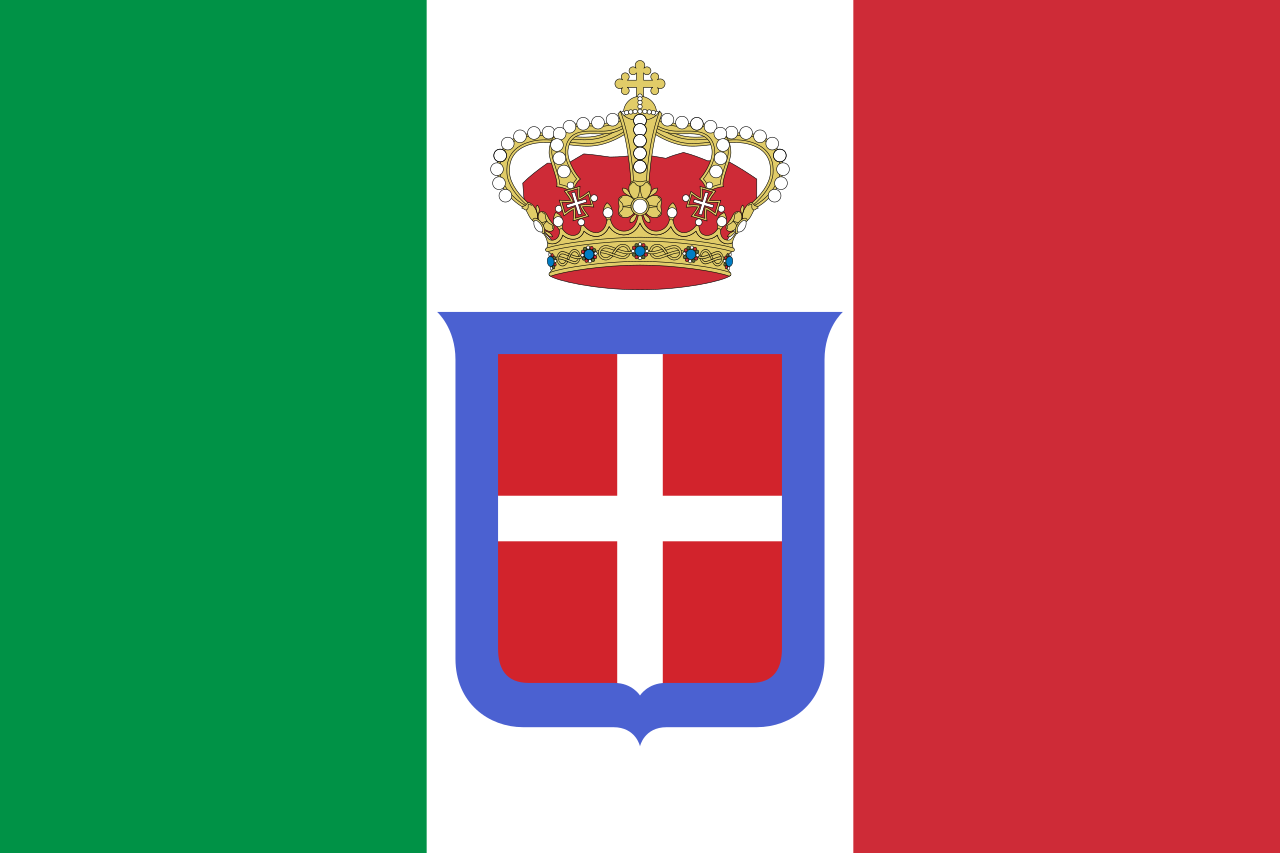
Above: Flag of the Kingdom of Italy (1861 – 1946)
The final action of the war took place at the north end of the Lake.
After skirmishes on the Lake on 24 July, Manfroni learned that the Austrian army had abandoned Riva del Garda, which was one of his key supply points.
To prevent the town falling to Garibaldi, he steamed north and occupied the fortifications in the town with his marines, and on 25 July his forces were able to hold off Garibaldi’s volunteers until nightfall.
Above: Moritz Manfroni von Montfort (1832 – 1889)
At 10 p.m. the Hess arrived with a telegram confirming that a ceasefire had been declared between Austria and Italy.

Above: Flag of the Austrian (Habsburg) Empire (1804 – 1867)
Giovanni Beatrice known as Zanzanù (1576 – 1617) was an Italian bandit of the Republic of Venice .
He was one of the most heinous bandits of the Serenissima responsible, with his band, between 1602 and 1617, of about 200 murders, according to the testimony of the bandit and assassin Alessandro Remer of Malcesine , who was hired in 1609 by a group of merchants from Desenzano del Garda to exterminate the Zannoni band.
From the 22 sentences of bans pronounced by the Venetian magistrates against Beatrice, from 1605 to 1616, the murders clearly attributed to him did not reach 10 and those that were committed in the years 1605 – 1609 were against those who had killed his father.
This is the image that emerges from the judicial sources that testify both the numerous sentences imposed against him, and the activity of the ruthless bounty hunters aiming to obtain prizes and benefits offered by the Republic of Venice in exchange for his killing.
Above: Giovanni Beatrice (aka Zanzanù)
In fact, a more accurate examination of the same sources allows us to outline the figure of a man who became an outlaw to defend his honor and that of his family.
A bandit who soon became legendary for the abuses and injustices that were committed against him.
The vicissitudes of the life of this man and the extreme complexity of the social relations within which they took place are emblematic of the transformations that affected Europe, determining the figure of the traditional bandit and of the conflicting dynamics that animated it, in that the outlaw was considered a dangerous enemy of social tranquility.
Giovanni Beatrice (or Beatrici), nicknamed by the locals “Zanzanù” or “Zuan Zanone” (Giovanni Zanone), was born in Gargnano in 1576, to Giovanni Maria Beatrice of the “Zanon” family and his wife, Anastasia.
His wife Caterina had numerous children: Anastasia born in 1598, Margherita in 1599, Pietro Antonio in 1601, Anastasia in 1602, Elisabetta Antonia in 1604, Giovan Maria in 1608.
He acted with a band of accomplices, known as the “degli Zannoni“, and a dense network of connivances, even high positions, in the Riviera di Salò, territory of the Republic of Venice , and in the Upper Garda of the episcopal principality of Trento, killing, stealing and extorting anyone.
In a short time with his criminal enterprises Zanzanù became the terror of the population and the concern of the Veneto supervisors.
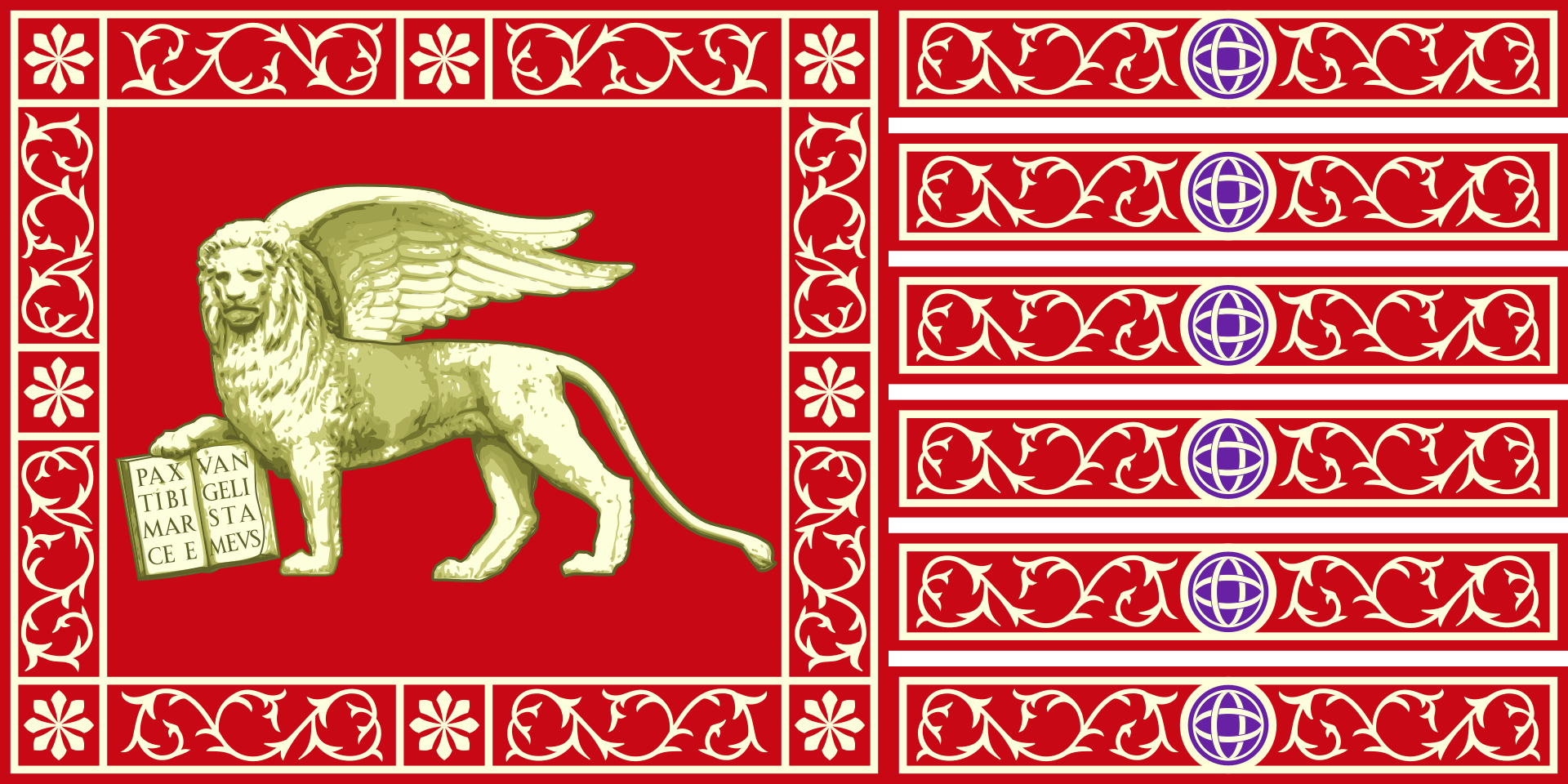
Above: Flag of the Republic of Venice (697 – 1797)
The first news of Beatrice dates back to 24 March 1602, when in Bogliaco, during a military parade of the “cernide“, the Venetian popular militia, of which he was a part, wounded by stabbing – with the complicity of his uncle Giovanni Francesco Beatrice called “Lima” – Francesco Sette of Maderno, the son of Riccobono, a bitter rival of his family and killed a friend of the Seven who had intervened in defense.
The two fugitive assassins were subsequently banished from all the territories of the Serenissima, but despite this they enjoyed high protection as guests of Giovanni Gaudenzio Madruzzo, captain of the Rocca of Riva del Garda and related to the prince bishop of Trento, Carlo Gaudenzio Madruzzo.
Above: Bogliaco
This first and convulsive period was marked by the killing of his father Giovan Maria, which took place in 1605 by some of his enemies.
A period that he would remember for the rest of his life:
“The father of I, Giovanni Zannoni of the Riviera of Salò, the ordinary son of those who descend to the lake, and from whom he derived the food of all his poor family, while he lived quietly, founded a solemn peace with a signed oath, over the sacrament of the altar, was wickedly slain by someone of the Riviera.
For this so inhumane and barbarous act, being sure of the cruelty of men, induced by desperation, I resolved to avenge such a serious offense and to secure my own life, having taken the path of arms, I avenged with the deaths of the enemy the loss of the father and the privation of the way of supporting my family, for which operations I was banished and persecution continued, I responded with new vendettas.”
The whole affair, which had as its decisive and ruthless protagonist the young Zanzanù, is in fact understandable only in the light of a harsh conflict in the years 1602 – 1605 between the Beatrice di Gargnano and the Sette families of Monte Maderno.
A conflict that most likely originated from a rivalry, for reasons of honor, between the sons of Giovan Maria Beatrice and those of Riccobon Sette, a wealthy landowner of Vigole in Monte Maderno.
However the wounding of Francesco Sette by Giovanni Beatrice did not constitute itself as the triggering element of the struggle without quarter which in the following years would see the two families facing each other.
In 1603 both Riccobon and Francesco Sette suffered the repercussions carried out by the administrator of Salò and the Venetian magistrates against their respective son and brother Giacomo.
For the protection and aid granted to Giacomo, Riccobon Sette ended up in prison in Salò, while his brother Francesco was in turn forced to leave the State.

Above: Salò
The situation precipitated at the beginning of the spring of 1603, when Giacomo Sette was killed in Armo on 14 April by his accomplice, Eliseo Baruffaldo di Val Vestino, who took his head to Salò for the ritual recognition.
These were perhaps the events that led Riccobon Sette to restore peace with the Beatrice of Gargnano.
The peace act was stipulated in August 1603 in the monastery of San Francesco di Gargnano, by Fra Tiziano Degli Antoni, a common friend of both parties.
The Beatrice were represented by Giovan Maria himself, while the archpriest of Gargnano, Bernardino Bardelli, brother-in-law of Riccobon Sette, was engaged for the opposing faction.
Riccobon Sette, in fact, was still in prison, while his son Francesco was banished.
However, the killing of the latter by some bounty hunters precipitated the situation.
Above: Monastery of San Francesco di Gargnano
On 16 June 1604 Riccobon Sette, still in prison in Salò , addressed the representatives of the Magnifica Patria, lamenting the loss of his two children and the difficult situation in which he found himself.
Upon leaving prison the opposition between the two families was rekindled.
The murder of Giovan Maria Beatrice by assassins sent by the archpriest of Gargnano pushed the conflict to extremes.
In the years 1605 – 1607 Beatrice in fact carried out several coups against his adversaries and enemies, always managing to escape the numerous ambushes by the bounty hunters on his trail.
It was not so for two of his companions, Eliseo Baruffaldo and Giovan Pietro Sette. known as Pellizzaro, who in November 1606 were killed by some bounty hunters and some enemies of the Beatrice whom the Provveditore General in the Mainland, in all secrecy, had sent on their trail.
The two were killed on 11 November 1606 in a night ambush stretched over the mountains of Gargnano, and their severed heads displayed in the square of Salò.
The spiral of violence that followed the feud between the two families helped to define the image of Zanzanù, especially starting from the years 1608 -09, when he was now unable to defend himself by resorting to the ordinary ways of justice.
He was thus credited with many crimes of which he was certainly not responsible (such as robberies and thefts).
He remembered, in 1616 in a plea directed to the Council of Ten:
“I confess to being guilty of many notices, but all for private crimes and none for the slightest of public and state affairs, nor with conditions excluded from the present I am not even entitled to compensate anyone, but let me be quite right in saying that, since many excesses have been committed by others under my name, of those who are out of hope of being able to free me, I have never cared to get rid of them.”
On 13 February 1609 in Tremosine, Zanzanù attacked, robbed and injured the doctor Oliviero, killed Gabriele Leonesio and stole an arquebus in a house.
Escaping to Limone sul Garda, on the night of February 13, he fell in an ambush at the port of Riva del Garda, where the band led by his uncle Giovanni Francesco “Lima” was targeted by the bandit Alessandro Remer of Malcesine who intended to claim the bounty.
Giovanni Beatrice was saved by jumping into the lake and swimming, while his brother Michele Zanon, Bernardo and Giovanni Battista Pace, known as “Parolotto“, of Salò were killed.
Giovanni Francesco “Lima“, although wounded in the thigh, managed to take refuge in Limone sul Garda, where he was, the next day, shot and then barbarously beheaded.

Above: Limone sul Garda
The most striking action of Giovanni Beatrice took place on 29 May 1610, when he was involved, according to the accusations of the Venetian magistracy, in the murder in the Cathedral of Salò of the Brescia magistrate Bernardino Ganassoni, podestà of the place, who was attending the solemn mass in honor of Saint Herculaneum.
The murder was carried out by Antonio Bonfadino who shot point-blank, and despite the presence of the escort soldiers he managed to escape.
Above: Salò Cathedral
In the following days Beatrice tried to approach the Brescian representatives who came to Salò during the process.
To them the bandit reported that, in exchange for a pardon, he would reveal the main culprits of the killing of Ganassoni.
Giovanni Beatrice’s involvement in the murder of the podestà Bernardino Ganassoni was in reality the work of the convergence of interests of administrator Giovan Battista Loredan, merchant Alberghino Alberghini and inquisitor Oltre Mincio Leonardo Mocenigo.
Loredan was worried that the motives that led to the murder of the podestà would emerge, so the involvement of the feared bandit would in fact make the procedural position of Martin Previdale and the other defendants definitively unrecoverable with him and with the same mayor.
The merchant Alberghino Alberghini, present in Salò in early June 1610 , together with the band of bounty hunters led by Alessandro Remer, pursued the same goal, aiming in turn to involve the two brothers Bonifacio and Ambrogio Ceruti.
Arriving on the Riviera in the first days of October 1610, Leonardo Mocenigo promptly endorsed the work of Loredan condemning to the scaffold one of the false witnesses involved in the trial.
Among the mountain shelters, in the cave called “Cùel Zanzanù“, in the locality of Martelletto, near Droane, in Val Vestino, they killed and plundered, according to the report by administrator Lunardo Valier of 15 April 1606 and sent to the Senate of Venice, on 29 September 1611, the wealthy Stefano Protasio of Toscolano with ten accomplices.
Despite the harsh repression carried out by Antonio Mocenigo, captain of Brescia, against banditry prevailing in the Riviera of Salò, through executions, the confiscation of property and banning from the Serenissima, Beatrice continued undaunted in his criminal exploits.
Between 1602 and 1609 the band “Zanoni” robbed the “cavallari” (travellers on the public road), assaulted boats on Lake Garda laden with goods, tyrannized the rural population, robbed the “mountains of mercy” of Manerba del Garda and Portese taking away 6,000 scudi and killed, according to estimates by bandit Alessandro Remer of Malcesine, about 200 people.
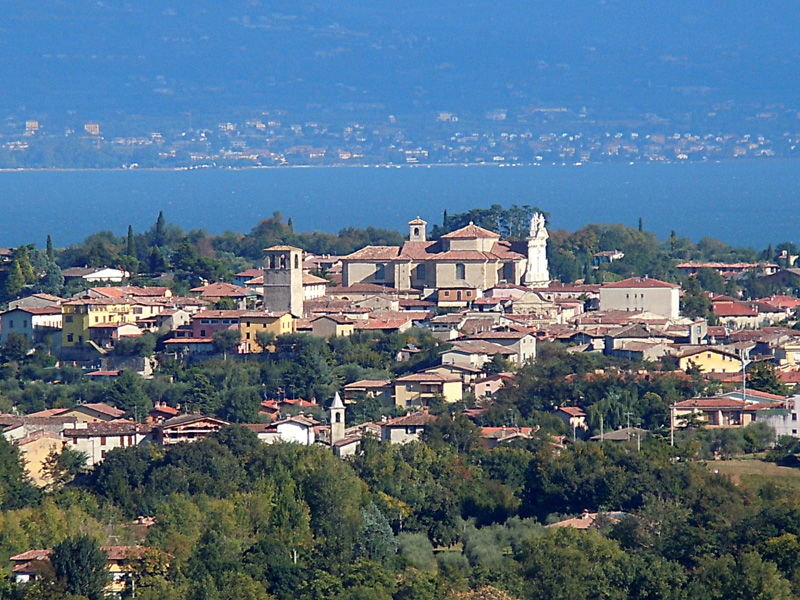
Above: Manerba del Garda
Hunted by the administrator Giovanni Barbaro, Zanzanù contacted the duchy of Parma, offering himself as a mercenary for Ranuccio I Farnese with the rank of lieutenant of infantry, then moved to the Cremonese until 1614 .
Returning to the Riviera in 1615, Zanzanù resumed his criminal activities.
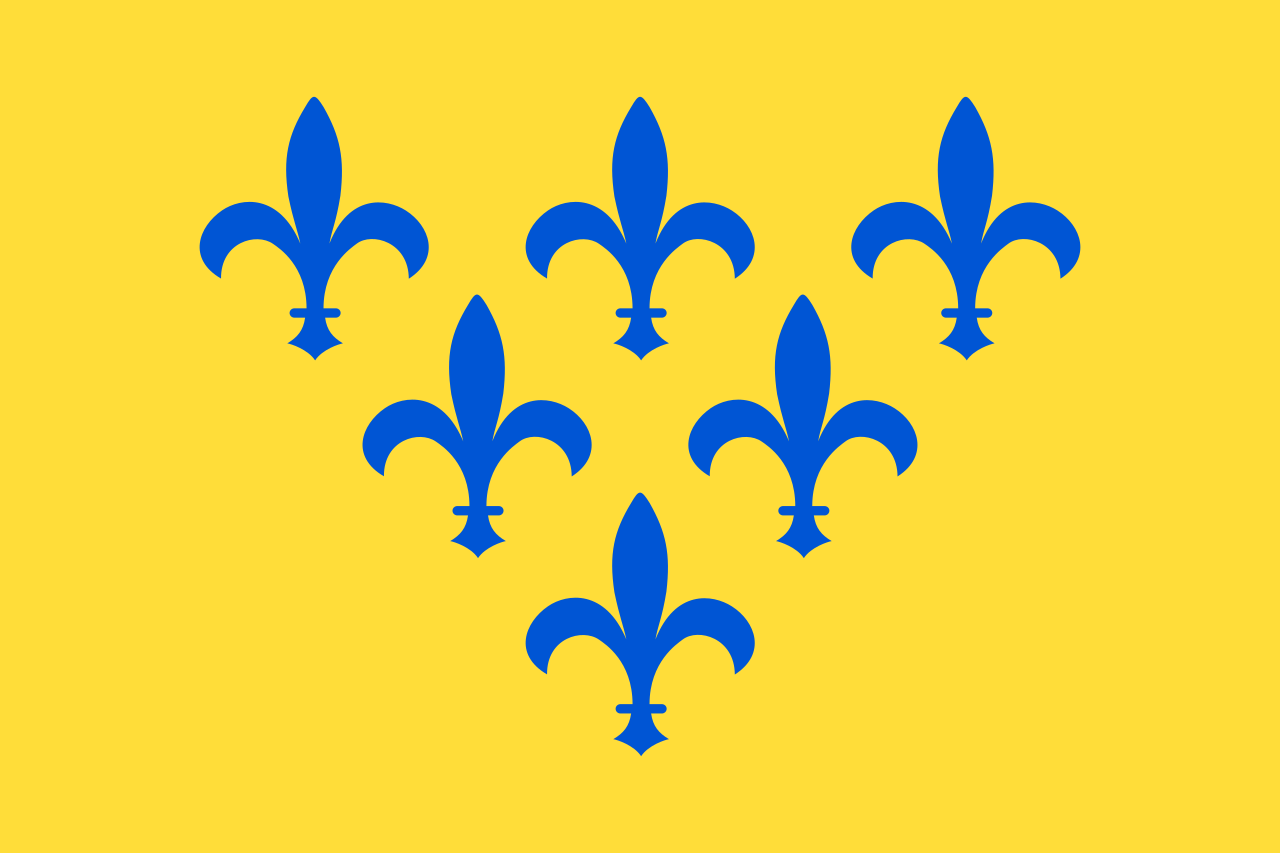
Above: Duchy of Parma flag (1545 – 1731)
On 24 June 1615 the administrator and Captain of Salò, Marco Barbarigo, informed the Senate that Zanzanù was sheltered in Val Vestino, the jurisdiction of the lords of Lodrone, with two priests of that valley who he had made his prisoners.
On 27 June, in the municipality of Capovalle, the Beatrice gang clashed with a department of cappelletti.
After furious gunplay they wounded the governor’s lieutenant Vucocrutt.

Above: Capovalle
The repressive activity carried out against Beatrice in this period is attested by the sentences pronounced by, the Provveditore and Capitano of the Riviera, Marco Barbarigo, in June and July 1615.
The administrator turned to the numerous supporters of the bandit, who did not disdain to help him and to host him, despite the severe penalties, threatening them on several occasions.
In particular, two women of Gargnano were condemned who, regardless of the grave consequences, were banished because, as the sentence said, they were “so bold and fearless as to leave their homes and rejoice with said Zanone, touching their hands and making them different welcome.”
The following year, Beatrice proposed the payment of a substantial sum of ducats to the municipalities of Tremosine and Maderno in exchange for his enlistment in the service of the Republic of Venice engaged in the Gradisca war against Austria.
The community of Gargnano, in June 1616, presented a petition from Beatrice to have it forwarded to the Heads of the Council of Ten.
In it the famous bandit, seizing the opportunity of the ongoing war with the Archdukes, offered himself, together with some of his companions, “to come and serve where your Serenity will appeal to me .“
Even if the proposal was not accepted it however reveals the desire of the feared bandit to return to the places where he had lived serenely his youth.

Above: Greatest extent of the Venetian Empire
On 17 August 1617, following the attempted kidnapping of the wealthy Giovanni Cavalieri di Tignale, Zanzanù was chased by armed youths from the village to the Valle del Gianech, and after a furious gunfight that caused four deaths among the bandits and six among the Tignalese, Beatrice fell at last.
His body was taken to Salò on the 19th.
Hanging from the gallows his body was exposed to the public until consummation, while the head was delivered to the authorities in Brescia.

Above: Brescia Castle
A large part of the adult population of the six villages that made up the Tignale community took part in the battle.
Among the five who fell during the bloody battle there were also some of the older and wealthy men of the community, who were more motivated to settle accounts with the famous outlaw.
Zanzanù was almost certainly killed by Antonio Bertolaso of Aer who, along with Maderno’s cousin Girolamo Gasperini and the group of soldiers who accompanied them, joined the bandits who were attempting their last escape.
Zanzanù and his two companions, survivors of the previous clashes, faced with the arrival of Gargnano’s men, had in fact been forced to retreat and find a last and improvised refuge in the valley of the Monible.
In reality the provincial of Salò was not satisfied.
Suspicious of the number of deaths among the six villages that made up the Tignale community, he ordered an investigation to see if there had been any complicity or aid from some sectors of the local population towards the killed bandit.
Even if this suspicion was not ascertained, the investigation reveals the inherent mistrust of the authorities towards the obvious support and aid that a small part of the most humble people of the Riviera del Garda had for some time offered to Beatrice.
The controversial and legendary figure of Giovanni Beatrice is still remembered today by the people of the area of Alto Garda and Val Vestino.
Here, in fact, children born out of wedlock are still called fiöi del Zanzanù (sons of Zanzanù).
If some people have no hesitation in pointing it out the terrible bandit was the author of many murders and heinous actions, others believe that his figure enjoyed a certain sympathy and consensus among the people.
The latter believe that it was not the common people who hunted the brigand, but were instigated or hired by those lords (nobles, landowners, wealthy merchants) against whom Zanzanù was raging.
Pietro Bellotti (1625–1700) was an Italian painter active in the Baroque period.
Above: Self portrait of Pietro Bellotti
Born in Volciano di Salò in 1625, he gained fame as a painter of portraits and heads of characters.
He worked for Cardinal Mazzarino, Cardinal Ottoboni (the future Pope Alexander VIII), the Elector of Bavaria and others.
He was patronized by Pope Alexander VIII and by the Duke of Uceda.
In Mantova he was “superintendent of the city and villa galleries” for Gorizaga.
After wandering from court to court he returned to Lake Garda and died in poverty in Gargnano in 1700.
His principal works are:
- La Parca Lachesi (1654) at the Museum of Stuttgart
- The Parcae Lachesis, private collection, Brescia
- Self-Portrait (1658) at the Uffizi Gallery, where he is depicted with a cup in his hand and a scroll with the inscription: “Hinc Hilaritas“
- Two Peasants’ Heads at the Pinacoteca di Bologna;
- Philosopher in the Pinacoteca di Feltre;
- Old Head at the Correr Museum;
- Medea at the Accademia dei Concordi in Rovigo;
- Maiden with a Turban in the Braunschweig Museum

Above: The Old Pilgrim, Pietro Bellotti
Enrica Bianchi Colombatto is an Italian actress, usually known by her stagename of Erika Blanc.
Her most notable role was as the first fictional character Emmanuelle in Io, Emmanuelle (A Man for Emmanuelle)(1969).

Blanc starred in several cult European horror films, including:
- The Third Eye (Il Terzo Occhio)(1966)
- Kill, Baby, Kill (Operazione Paura)(1966)
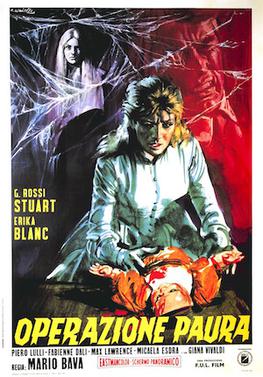
- So Sweet… So Perverse (Cosi’ Dolce… Cosi’ Perversa)(1969)
- The Night Evelyn Came Out of the Grave (La Notte Che Evelyn Usci’ Dalla Tomba)(1971)
- The Devil’s Nightmare (La terrificante notte del demonico)(1971)

- The Red Headed Corpse (La rossa dalla pelle che scotta)(1972)
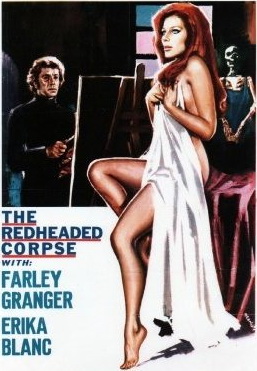
- Mark of the Devil, Part II (1973).
Her other film credits include roles in:
- Django Shoots First (Django spara per primo)(1966)
- Target Goldseven (Tecnica di una spia)(1966)
- Blood at Sundown (La più grande capina del West)(1966)
- Halleluja for Django (1967)
- The Longest Hunt (Spara, Gringo, spara)(1968)
- Seven Times Seven (7 volte 7)(1968)
- Hell in Normandy (Brigada suicida)(1968)
- Long Arm of the Godfather (La mano lunga del padrino)(1972)
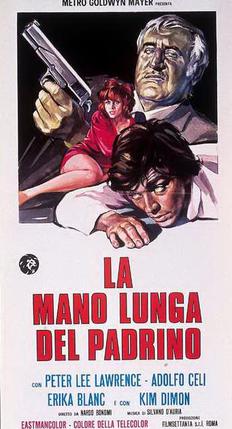
- Tony Arzenta (1973)

- The Stranger and the Gunfighter (La dove non batte il sole)(1974)
- Il domestico (The Domestic)(1974)
- I figli di nessuno (Nobody’s Children)(1974)
- Eye of the Cat (Attenti al buffone)(1976)
- La portiera nuda (The Naked Doorwoman)(1976)
- Dream of a Summer Night (Sogno di una notte d’estate)(1983)

She recently returned to films with small but intense roles under the direction of Turkish-born director Ferzan Özpetek, acting as Antonia’s mother in Le fate ignoranti (The Ignorant Fairies)(2001) and as the sensitive, alcohol-addicted Maria Clara in Cuore Sacro (Sacred Heart)(2005).
In 2003 she starred as the grandmother in Adored (Poco più di un anno), directed by Marco Filiberti.
In 1943 Gargnano hosted Mussolini who arrived there on 10 October, where he occupied, in the San Giacomo area, Villa Feltrinelli (now a luxury hotel).
The Duce, who had recently established the Italian Social Republic, lived in the villa with his wife, Donna Rachele, and children Romano and Anna Maria.

Above: Benito Mussolini (1883 – 1945)
Diodato “Uto” Ughi is an Italian violinist and conductor.
He is considered one of Italy’s greatest living violinists and is also active in the promotion of classical music in today’s culture.
When he was young he started to play the violin and he made his debut at 7 years old, at the Teatro Lirico di Milano.
At 12 years he was considered a mature artist.
Ughi involves himself in many activities to promote music culture.
He is the founder of several music festivals, namely “Omaggio a Venezia“, “Omaggio a Roma” and “Uto Ughi per Roma“.
In tandem with Bruno Tosi, Uto Ughi instituted the musical prize “Una vita per la Musica“. (“A life for music“)
On 4 September 1997, Ughi was commissioned Cavaliere della Gran Croce by the Italian President and in 2002 he received a degree honoris causa in Communication studies.
He has won various awards, the most prestigious “Una vita per la musica – Leonard Bernstein” (23/6/1997), “Galileo 2000” prize (5/7/2003) and the international prize “Ostia Mare” (8/8/2003).

Above: Uto Ughi
Oscar Alberto Ghiglia (born 13 August 1938) is an Italian classical guitarist.
Born in Livorno to an artistic family – his father and grandfather were both famed painters, his mother an accomplished pianist – Oscar Ghiglia had to choose between a path strewn with brushes and colours and a world cut into harmony and melody.
Though his early choice produced a few hundred water colours and a number of oil paintings, he soon realized music was his way.
For this decision he thanks his father, who one day made him pose for a painting showing a guitarist.
For this he had to hold his father’s guitar, a companion to his artistic musings in front of his forming works.
This painting was the start to a lifetime of disciplined dedication to music.
Oscar Ghiglia graduated from the Santa Cecilia Conservatory in Rome and soon began study with Andrés Segovia, who was his major influence and inspiration during his formative years.
Later Oscar Ghiglia “inherited” Segovia’s class in Siena’s Accademia Chigiana and spread his own teaching around the five continents in a sister vocation to his concerts.
Oscar Ghiglia founded the Guitar Department at the Aspen Music Festival, as well as the Festival de Musique des Arcs and the “Incontri Chitarristici di Gargnano“, was artist in residence or visiting professor in such centres as the Cincinnati and San Francisco conservatories, the Juilliard School, the Hartt School and Northwestern University in Evanston, Illinois.
In all these centres and elsewhere Ghiglia has been nurturing talents and forming or perfecting young artists’ musical outlook and interpretation.
He has been teaching at the Accademia Musicale Chigiana since 1976.
Besides touring as a solo performer, Oscar Ghiglia has played and recorded with such names as:
- Victoria de Los Angeles
- Jan de Gaetani
- Gerald English
- John McCollum
- Jean-Pierre Rampal
- Julius Baker
- the Juilliard String Quartet
- the Emerson String Quartet
- the Cleveland String Quartet
- the Quartetto d’archi di Venezia
- the Tokyo String Quartet
- Giuliano Carmignola
- Franco Gulli
- Salvatore Accardo
- Régis Pasquier
- Adam Krzeszowiec
- Albert Roman
- Laszlo Varga
- Eliot Fisk
- Shin-Ichi Fukuda
- Letizia Guerra
- Antigoni Goni
- Elena Papandreou.
Oscar Ghiglia was a founding member of the International Classic Guitar Quartet.
After his CD Manuel Ponce Guitar music, a new set of recording projects was under way and his teaching continued, year long, in Basel, where he held the professorship in guitar at the Musik-Akademie der Stadt Basel from 1983 to 2004.
Founder of the International Guitar Competition of Gargnano, Ghiglia boasts a very high number of first prize winners among his students, in competitions around the world.
In 2006, after retiring from the Basel Musik-Akademie, he moved to Greece, following his marriage to colleague and former pupil Elena Papandreou, now guitar professor in the University of Makedonia in Thessaloniki.
Above: Basel Music Academy
Following his CD J.S. Bach Lute Works, and a DVD of his favourite repertoire, he continued giving concerts across the oceans, has residencies at the universities of Cincinnati and Evanston, Illinois, and does as well summer teaching at the Accademia Chigiana of Siena and his “Incontri Chitarristici di Gargnano“.
Certainly Gargnano as home to a bandit, a painter, an actress, a dictator and two world-class musicians is extremely interesting.
But it was the presence of a famous English writer in Gargnano that left me feeling frustrated at our failing to stop there in our haste to reach Riva del Garda before nightfall.
For there is much in his story that fascinates me, much that I can relate to.
Above: Gargnano
When someone visits a place for a day and decides to stay for six months you know they must have discovered something quite special.
It was 1912 and David Herbert (D.H.) Lawrence (1885 – 1930) was having an affair with Frieda von Richthofen (1879 – 1956), the wife of his university professor.

Above: D. H. Lawrence
Wanting to escape from both her husband and the turmoil of the Industrial Revolution in full swing in England, the pair decided to set off on their travels to discover new people, cultures and a more relaxing lifestyle.
Their first destination was Frieda’s homeland of Germany, but soon they wanted to travel further south, so, after a short stay in the Tyrol, they set off, with their knapsacks on their backs, on a long trek over the Dolomites, via Bolzano and Trento.

By September 1912 they reached the northern end of Lake Garda and the town of Riva del Garda.
Like so many authors, Lawrence fell in love with the Lake and the endless inspiration it could provide a creative mind, but Riva proved too expensive for them to set up a permanent residence.

Above: Riva del Garda
On Wednesday 18 September 1912, David and Frieda left Villa Leonardi di Riva del Garda and decided to go on a boat trip to the smaller town of Gargnano and heard by chance about a flat that was available to rent within their budget.
It became their home from 18 September 1912 until 30 March 1913.
Above: David and Frieda
Even though a century has passed since Lawrence and Frieda arrived in Gargnano, little has changed in the town, apart from a few essential roads now winding their way through the centre and more houses popping up to extend the town’s boundaries.
Gargnano has essentially escaped the tourist trappings of many of the Lake’s most popular locations, and so it is still possible to walk around the area and follow Lawrence’s footsteps to recreate a few of his experiences.
Lawrence and Frieda’s Lake Garda flat was located on the second floor of a large yellow-painted building at via Colletta 44 called Villa Igea, which now wears a discreet white marble plaque revealing its most famous resident.
Above: Villa Igea, Villa, Gargnano
“VILLA IGEA
DIMORA DI D.H. LAWRENCE
DAL SETTEMBRE 1912 ALL’ APRILE 1913”
No explanation of Lawrence’s identity is given.
Situated in San Gaudenzio di Muslone (known today as simply Villa), a small village on the outskirts of Gargnano, the rent was cheap but the flat still benefited from stunning views of the Lake.
The house became, for the two lovers, a refuge from which to observe the daily life of the country, the changes of nature with the arrival of spring, the spectacular scenery and local traditions.
Lawrence transcribed all of his impressions of this long exploration in numerous letters sent to England to family, friends, fellow writers and editors.
Lawrence often commented on how he would lie in bed of a morning and watch the sun rise over the mountains, eventually filling the room with light.
To him, this was paradise.
Gargnano was an escape from the culture of money and machinery that he so deeply detested, and the people of Gargnano the keepers of an ancient and impassive world that remains unruffled by and resistant to the upheaval of tumultuous modernity.
Lawrence used the most beautiful and fascinating words to capture daily moments and images of a landscape and nature that managed to soothe the pains of the young writer.
Though not everything Lawrence wrote was so pleasant:
“When at night the moon shines full on this pale facade, the theatre is far outdone in staginess.
Now everything is theatrical.”
Like living on a set where everything demanded literary criticism.
He wrote that the theatrical performances that he witnessed in Castellani Hall did not leave a very positive impression and he did not write an overly complimentary account of the teacher Feltrelline from whom they received lessons in French, German and Italian.
The sunshine and climate were actually the main motivations for Lawrence and Frieda to stay on Lake Garda.
Lawrence was suffering from tuberculosis and the sun was thought to offer a vital source of energy to help battle the disease.
But it provided him with inspiration too, and far from being a holiday or time for convalescence, Lawrence wrote many of his best works while staying in Villa Igea.
He finished Sons and Lovers, started work on The Lost Girl which would later be called The Rainbow and The Sisters which became Women In Love, plus penned his first travel book Twilight In Italy.

(Catherine Brown attended the 13th International D.H. Lawrence Conference held in Gargnano in 2014:
“One evening we saw a performance, by local actors (plus John Worthen) of The Fight for Barbara.
Written by Lawrence during his stay in Gargnano, this play thought through the difficulties and possibilities (including disastrous ones) of his elopement with Frieda.
Yet the play is of questionable comprehensibility to Italians.
The husband threatens Barbara with his own suicide.
An Italian husband of Lawrence’s period would have killed her or her lover, or abducted her, or at least threatened some such thing.
Certainly not talked about suicide.
Barbara’s father reminds the lover that married women are out of bounds.
An Italian man of Lawrence’s period would have seen a married woman as a particular prize, and certainly not have lectured another man to the contrary.”)
It was not an easy time for the two young lovers.
They lived in a precarious position, with Lawrence trying to support them both with his writing, hoping not to be forced to look for a job as a teacher, a profession he hated.
Frieda lived with the hope of seeing her children as soon as possible, having left them to escape with Lawrence, pending the conclusion of her divorce from her husband Ernest Weekley.
Above: Frieda and D.H.
It is in Twilight In Italy that we discover most about Lawrence’s time on Lake Garda, as he takes us with him on his day-to-day encounters with the locals and explores his surroundings.
One such encounter involved visiting his landlord, who he refers to as the padrone.
The padrone lived in a grand house called Villa De Paoli set just behind Lawrence’s flat.
It has now been transformed into offices and a car park, but next to the building you will find a garden shaded by beautiful olive trees and featuring a pergola under which Lawrence liked to sit and watch the daily comings and goings of the boats on the Lake.
It was in the grounds of Villa De Paoli that Lawrence had his first experience of Lake Garda’s iconic lemon houses.
Unlike anything he had ever seen before, in Twilight in Italy he described them as looking like naked pillars, rising out of the green foliage like ruins of temples.
While the fruit was growing and the sun shining on the leaves Lawrence thought the houses were beautiful, but as soon as winter arrived he regarded them as sordid and ugly because of the big wooden shutters that were put up to protect the trees from the inclement weather.
Before he knew the purpose of the wooden greenhouses he was confused by the sight of men climbing up ladders and leaping from one small ledge to the next, in order to lay the large wooden panels across the pillars and hammering loudly as they did so.
Having just left behind an industrial England, it was also odd for him to see everything being done by hand.
Despite hating the machines, Lawrence saw the Italian way of doing things as backwards, as if they were living in the past.
Today the only sign of Villa De Paoli’s lemon house is the presence of a few pillars hidden behind the car park.
A sad reminder of a once majestic past.
As you walk along the main road from Villa to Gargnano you will however come across La Molora, a private lemon house that the owner is working hard to restore to its prime.
Here you can see for yourself the imposing pillars and lemon trees working their way up the hill, in the way that Lawrence was so intrigued and perplexed.
From his flat, Lawrence could see a church set on a slight hill overlooking the village, that he often glanced at but never thought to visit.
One day when he heard the gentle ringing of the church bells he decided to try and find out more about it.
There was no obvious path to the church, so Lawrence went out the back door of his house and made his way through the narrow side streets, unsure of quite where he was going.
It was while walking these side streets of Villa that Lawrence felt the most alien and alone during his time on Lake Garda.
Above: San Tommaso, Villa, Gargnano
In Twilight in Italy he describes how odd it was walking through the narrow passageways, which were dark and shady compared to the brightly-lit paths by the lakeside.
He could see the town’s inhabitants staring at him suspiciously through their windows, wondering who this stranger was.
Gargnano wasn’t often visited by tourists and so Lawrence felt that his pale skin shone out even more here, and feared that it turned him into something of a spectacle.
Lawrence writes about the church and cloister of San Francesco on via Roma in Gargnano.
He put the simple Romanesque church of San Francesco (built in 1289) in the category of churches of the dove, which he defined as “shy and hidden“.
“They nestle among trees or they are gathered into silence of their own, in the very midst of the town so that one passes them by without observing them.”
He says of San Francisco:
“I passed it several times in the dark, silent little square, without knowing it was a church.”
(The road has since been widened so the square is no longer discernible.)
Lawrence was captivated by the cloister, which became a citrus fruit warehouse at the end of the 19th century, with “its beautiful and original carvings of leaves and fruits upon the pillars“.
After several unsuccessful attempts to reach the San Tomasso church, Lawrence eventually discovered a long broken stairway that led him to the courtyard of San Tommaso, or one of the churches of the eagles – which “stand high, with their heads to the skies, as if they challenged the world below” – which still provides access to the building today.
He “came out suddenly, as by a miracle, clean on the platform of my San Tommaso, in the tremendous sunshine.
It was another world, a world of fierce abstraction.
The thin old church standing above the light, as if perched on the house roofs.
Its thin grey neck was held up stiffly.
Beyond was a vision of dark foliage and high hillside.”
When you reach the summit you will be greeted by a similar sight as Lawrence’s.
Countless red-slated roofs spread out beneath you, giving way to the seemingly never-ending water of the lake.
It’s hardly surprising that Lawrence described this platform as suspended above the village like the lowest step of heaven or Jacob’s ladder.
The terrace of San Tommaso is let down from heaven and does not touch the Earth.
Everywhere Lawrence went in Villa and Gargnano seemed to provide him with the new experiences and inspiration he had been searching for when he first embarked on his travels.
San Tommaso certainly found a special place in his heart.
As you wander the streets of Villa and Gargnano, stopping briefly at the pretty little harbour where Lawrence first arrived in the town and passing by the theatre which remains as it would have looked to Lawrence on the outside, you can see why he chose to stay here so long.
Italy and Lake Garda are familiar destinations for us today, but for Lawrence there was still so much to explore and understand, so much that was alien and intimidating and yet at the same time captivating and exciting.
He couldn’t help but be drawn to the unique character of the town, the intriguing local people and the beauty of the lake itself.
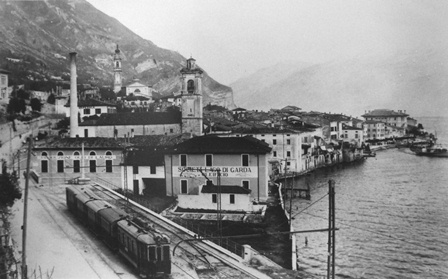
The Hotel Gardenia al Lago is a hotel in Villa, a romantic little village administered by Gargnano, the largest and most distinctive municipality on the “lemon Riviera”.
It stands, proud and elegant, with its Mitteleuropean architecture, right on the shores of Lake Garda, with the mountain peaks of the Parco Alto Garda Bresciano nature reserve as its backdrop.
The waters of the Lake lap the edges of the magnificent garden and surround the panoramic lookout point in the dining room, and on the opposite shore stands the majestic Monte Baldo mountain range, which generously lays on the most unforgettable displays of light and colour at both sunrise and sunset.
Hotel Gardenia al Lago has a particular charm and aura, not due to the opulence and richness of its décor, but to its harmonious setting, the elegance of its rooms, furnished with pieces from the old house dating back to 1925, and to the warm welcome given by the Arosio family, who have owned and run the hotel personally for three generations.
Inside the Hotel, on the 4th floor, guests will find an exhibition dedicated to Lawrence, organized in 2012 by the Historic Gargnano Committee, on the centennial of the writer’s residence.
Through the descriptive panels and photographs, you can trace the life of the writer, famous for having written Lady Chatterley’s Lover and Sons and Lovers.

I longed to visit Villa.
I longed to relax in a waterfront café by the port of Gargnano.
I wished to wander around the abandoned olive factory, the lakefront villas with their boathouses, the Palazzo Comunale with the two cannonballs wedged in the walls from the aforementioned naval bombings.
I longed to stroll along the road which leads out of Gargnano from the harbour for 3 km past the beach and through olive and lemon groves, past the Villa Feltrinelli – the grand lakeside house / world-class hotel with tastefully furnished rooms (€1,380 per night) where Mussolini once ruled….
To the tiny 11th century Chapel of San Giacomo di Calino.
I wanted to look, on the side facing the lake, under the portico where fishermen keep their equipment, at the 13th century fresco of St. Christopher, the patron saint of travellers.
But we were not travellers.

We were tourists, and tourists by their very nature value the destination far more than the journey.
We do not linger in Toscolano-Maderno.
We do not stroll through Gargnano.
We do not detour down the road to Lake Idro through the hills of Valvestino.

We are on a mission.
We will not procrastinate.
We do not see the green of olive trees or the blue of the sky and the Lake.

I love my wife, so practical and pragmatic.
A better wife than I will ever deserve.

But a quiet voice within me weeps.
It longs to one day find a place and on that day spontaneously decide to linger there for six months or for a lifetime.
I say nothing as we zoom past Toscolano-Maderno.
I am silent as we speed past Gargnano.

My mind’s eye sees sailboats afloat on turquoise waters, orchards of olives and groves of lemons, huge stone walls and tall pillars, testaments of memory.

The Buddha is rumoured to have said that the greatest folly of men is that we believe that we have more time to live than we are actually granted.

Nonetheless I find myself thinking about retracing the routes followed and described in Lawrence’s Twilight in Italy.
To walk from Innsbruck to Riva del Garda or from Schaffhausen to Milan, time and money be damned….
That would be amazing.
But as the years zoom by at breathtaking speed I find myself entering a state of obscurity, of ambiguity, a general decline.
It is twilight when we reach Riva.
The soft gleaming glow of the sky is light clinging to a descending sun disappearing below the horizon, a semi-darkness, the gloom of a dying day.
So much to see, so much to do, so little time before night falls.
Such is twilight in Italy.
And everywhere else.
Sources: Wikipedia / Google / Sally Fitzgerald, “D.H. Lawrence’s Lake Garda”, www.travelandlife.com / www.lakefrontboutiquehotels.com / www.gargnanosulgarda.com / Gaby Logan, “Gargnano Celebrates D.H. Lawrence Centennial“, www.italymagazine.com / D.H. Lawrence, Twilight in Italy

